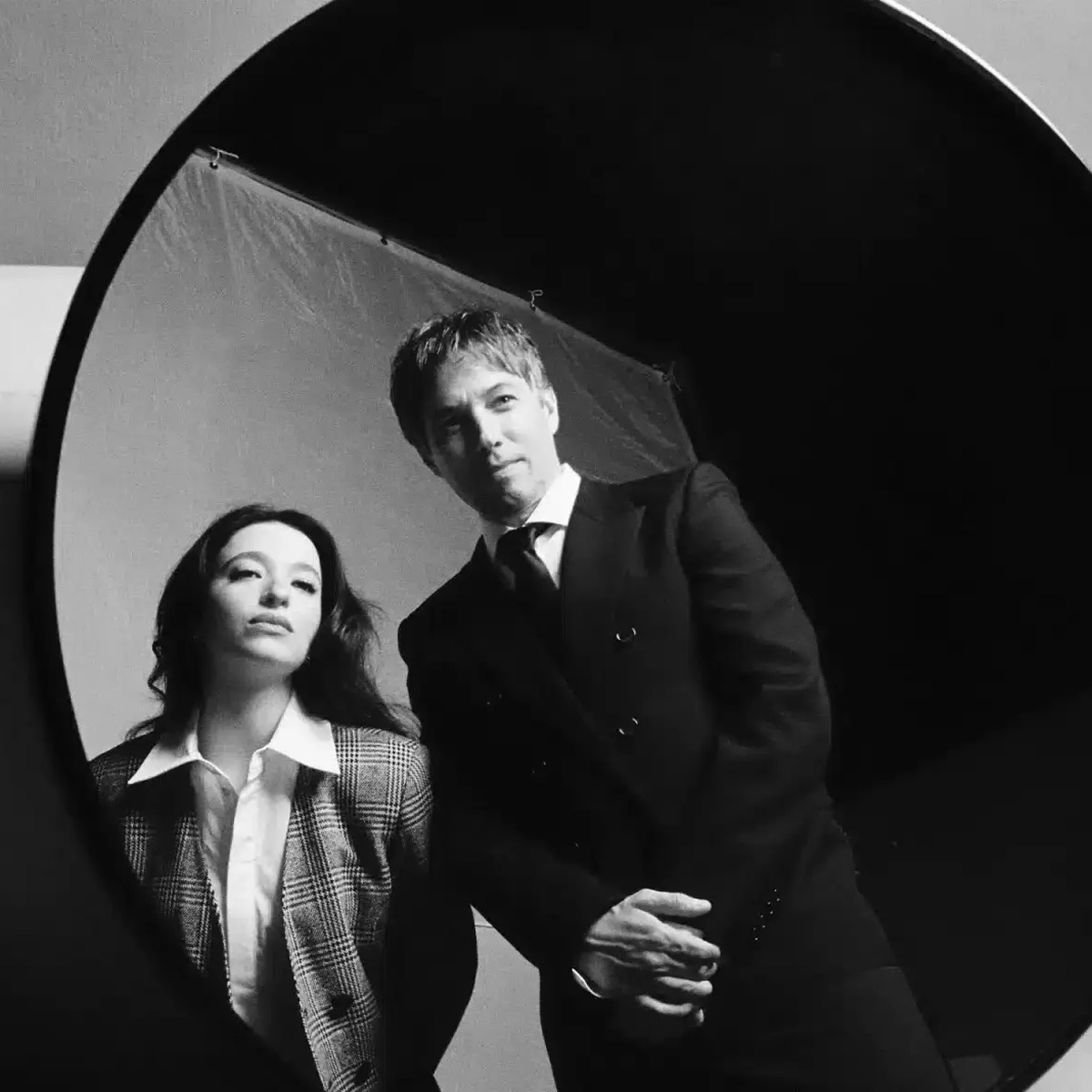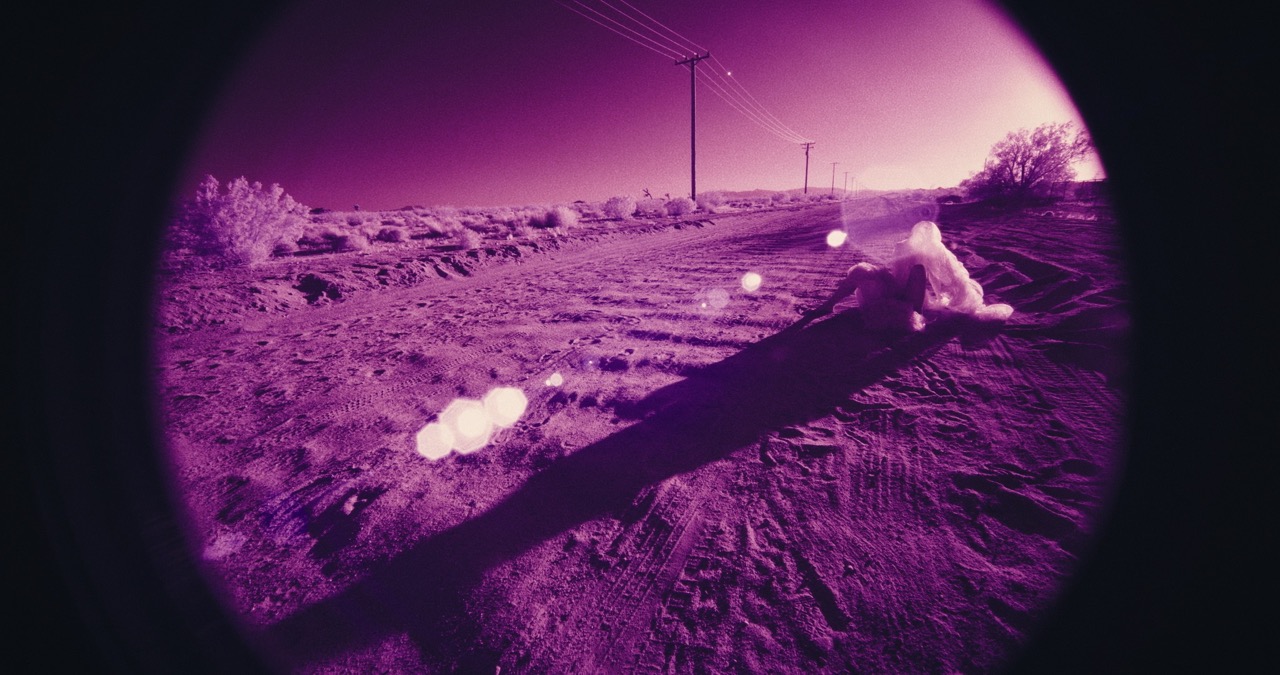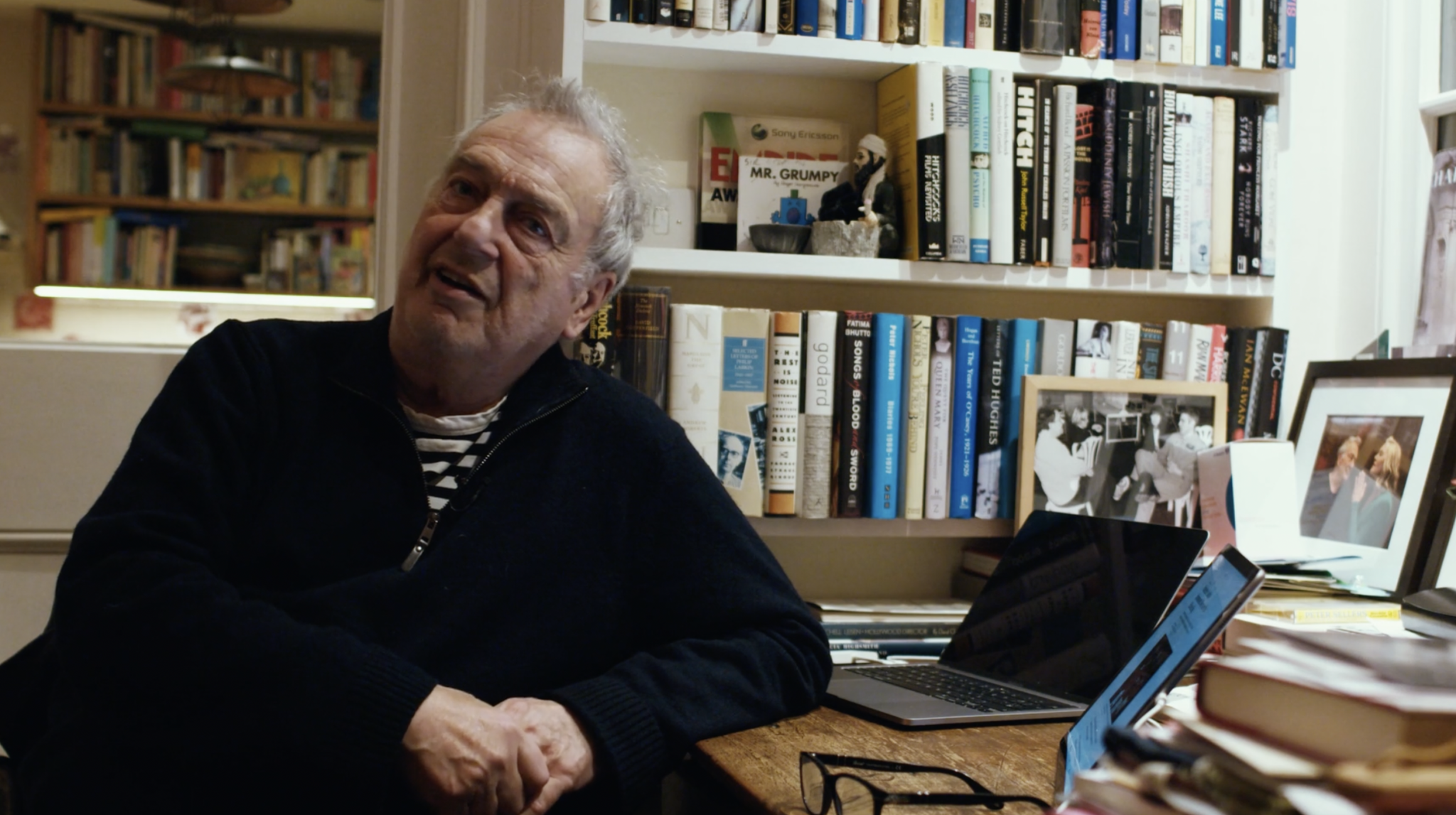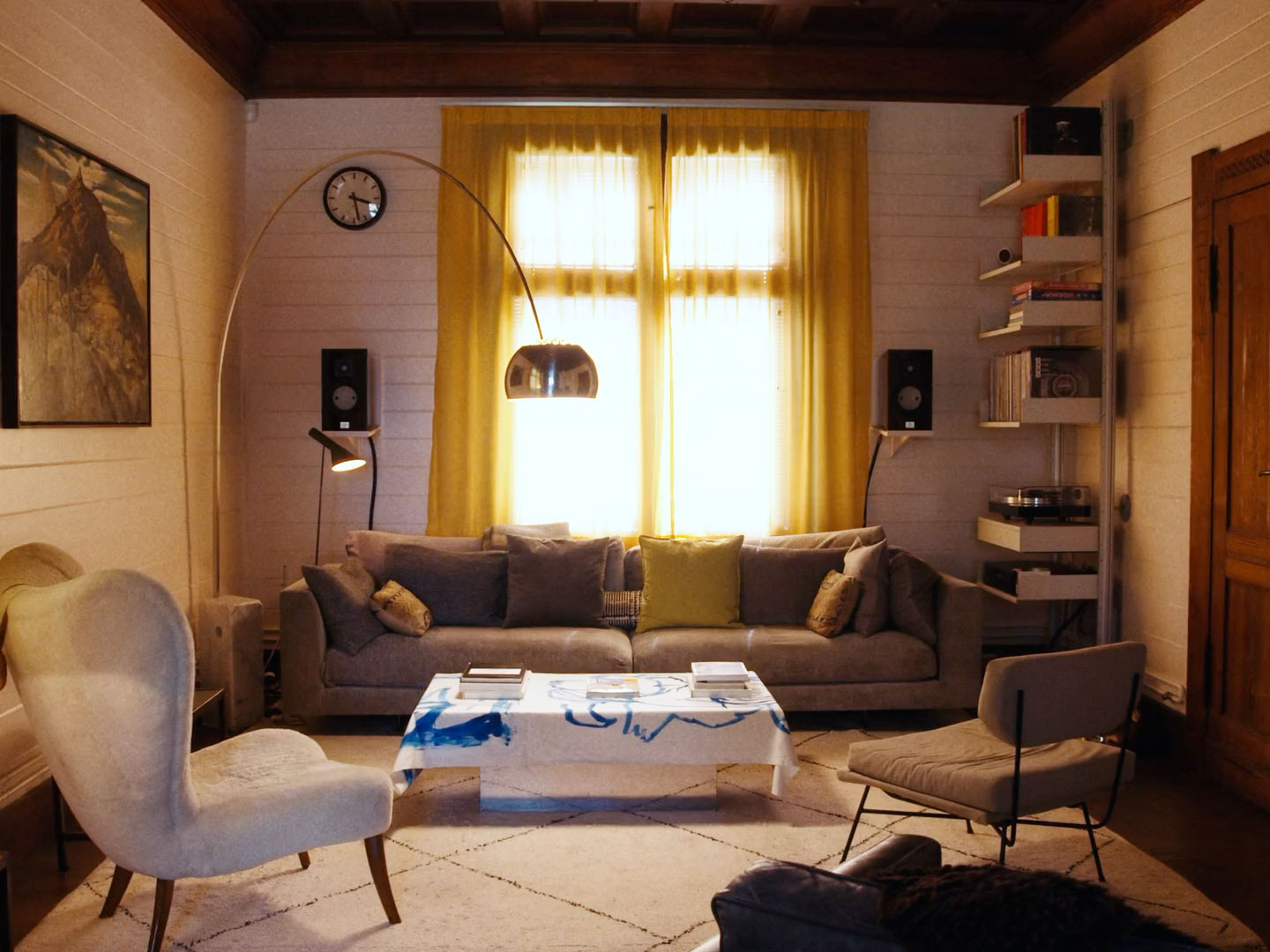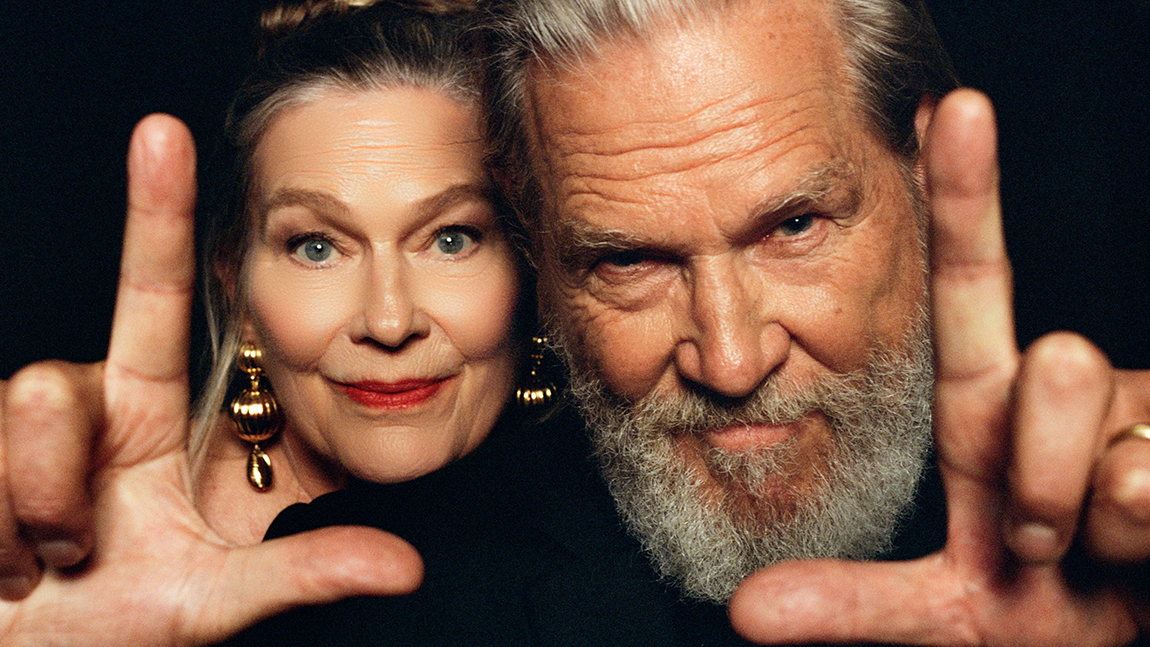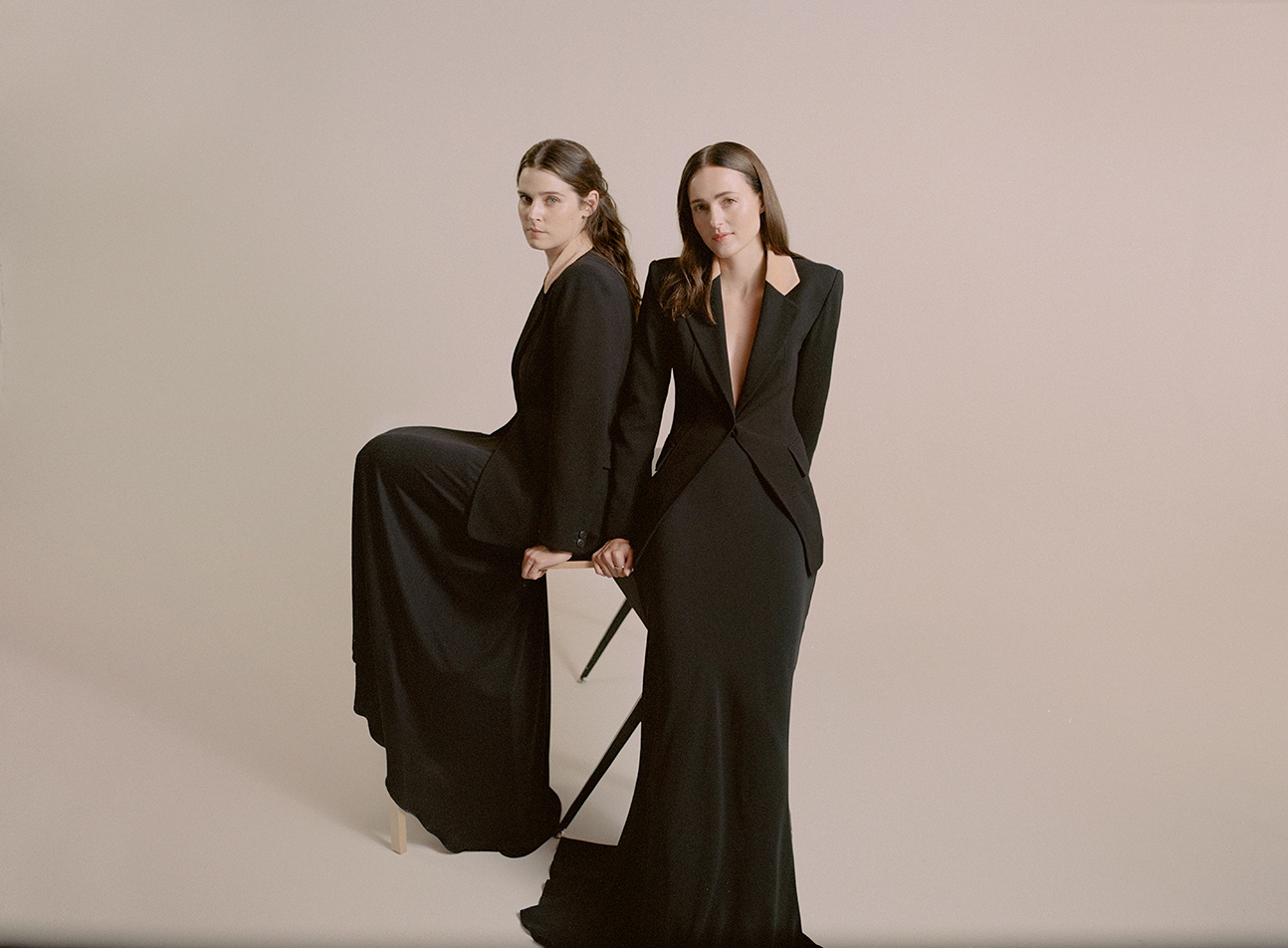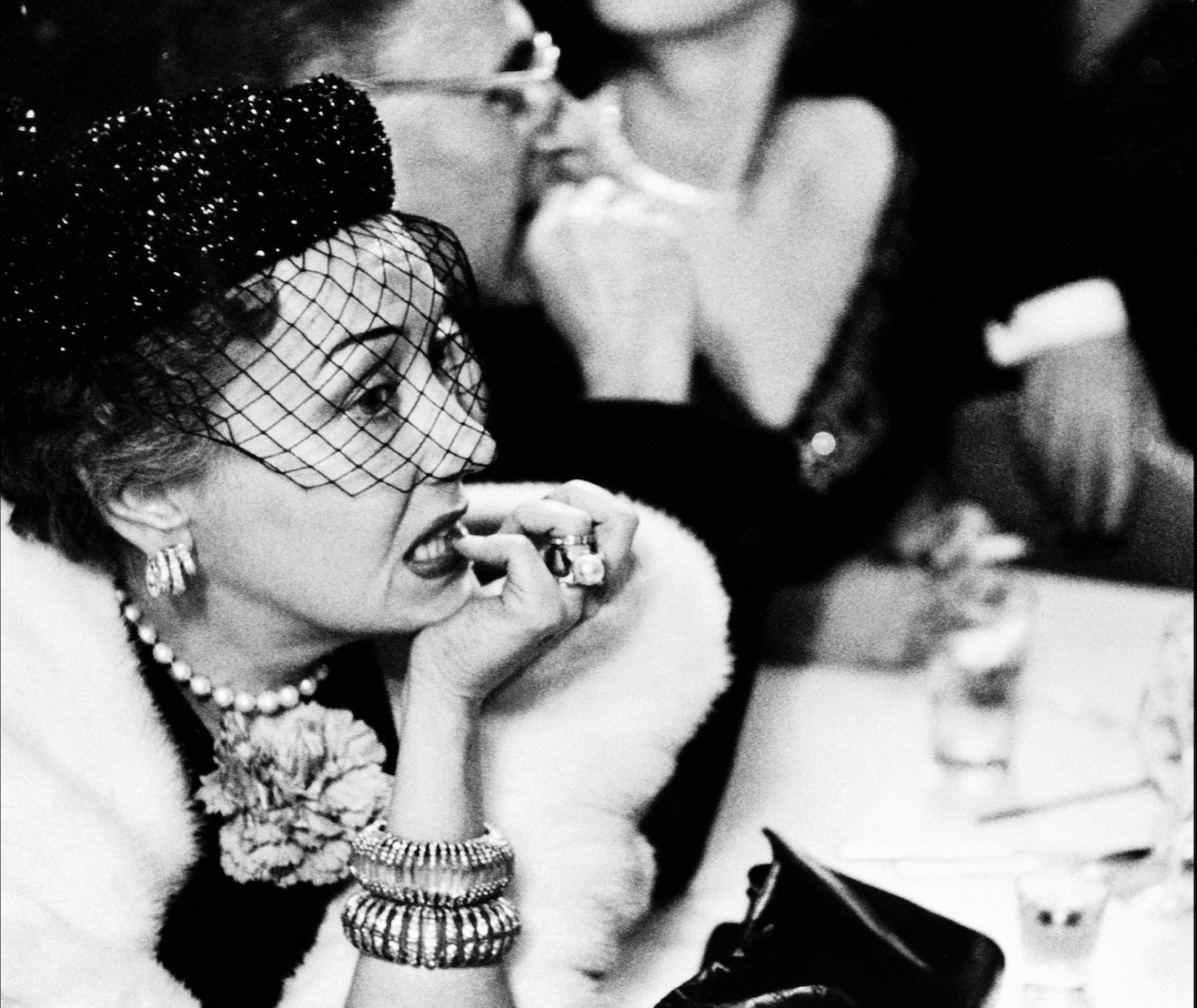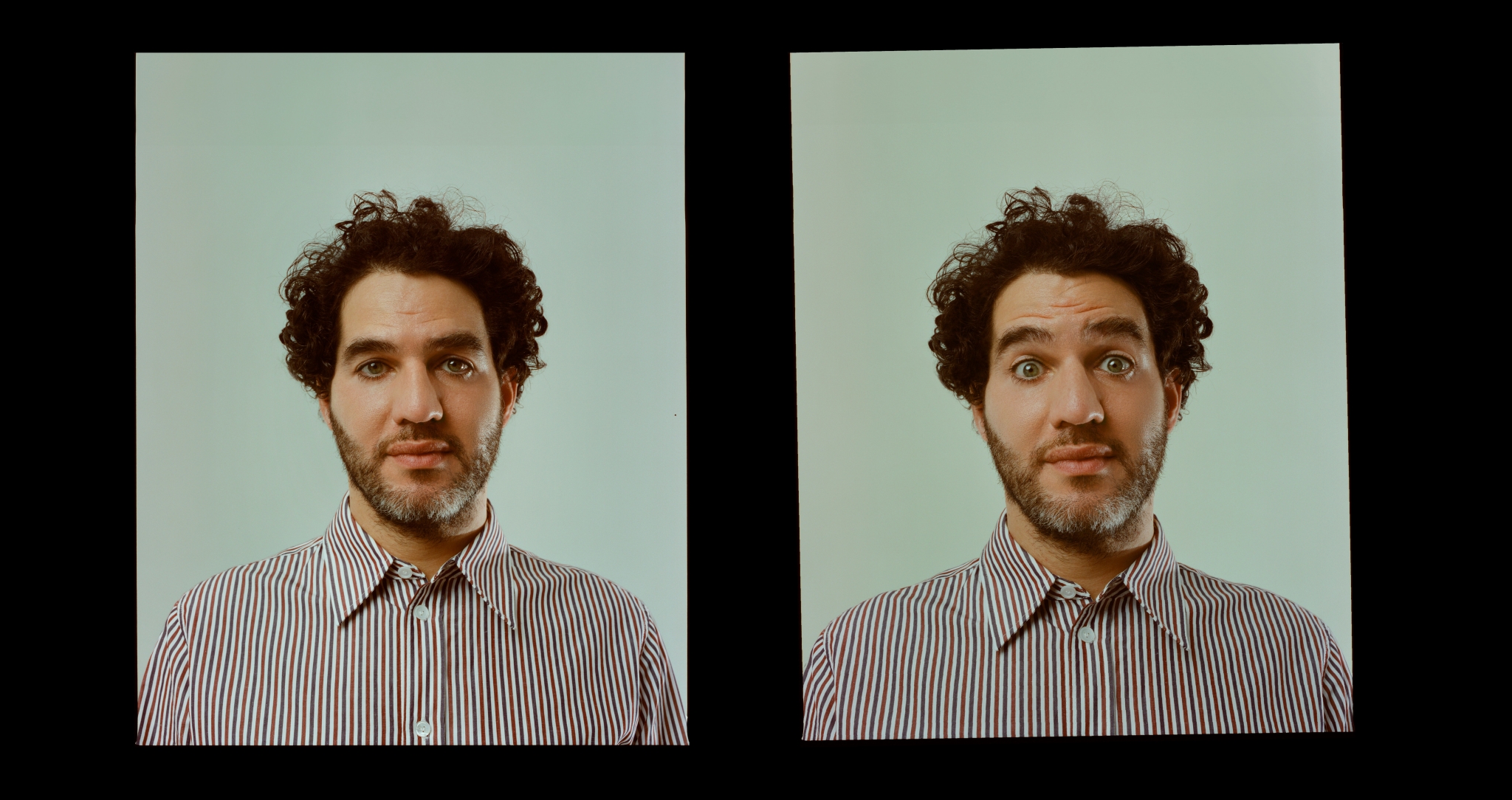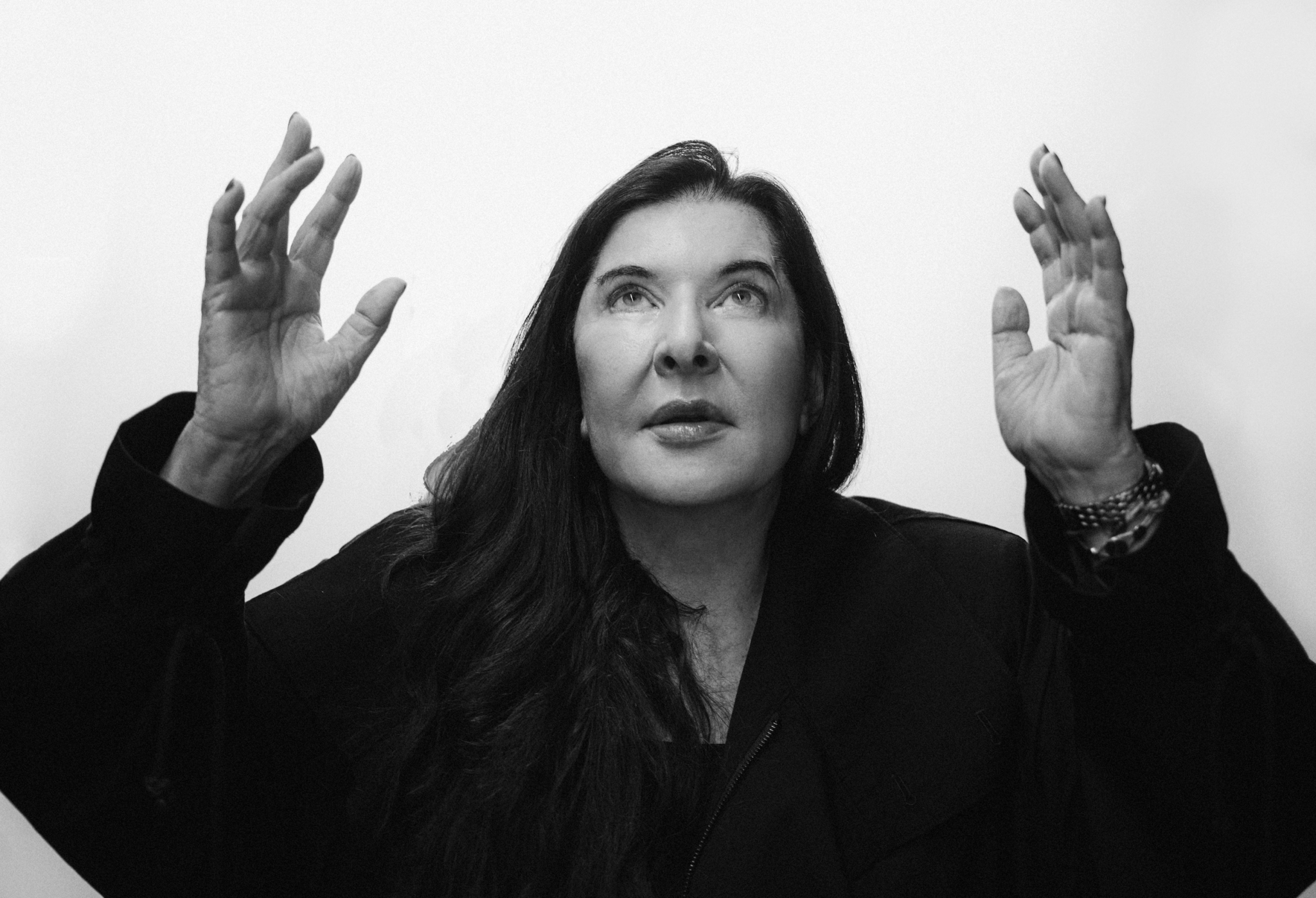
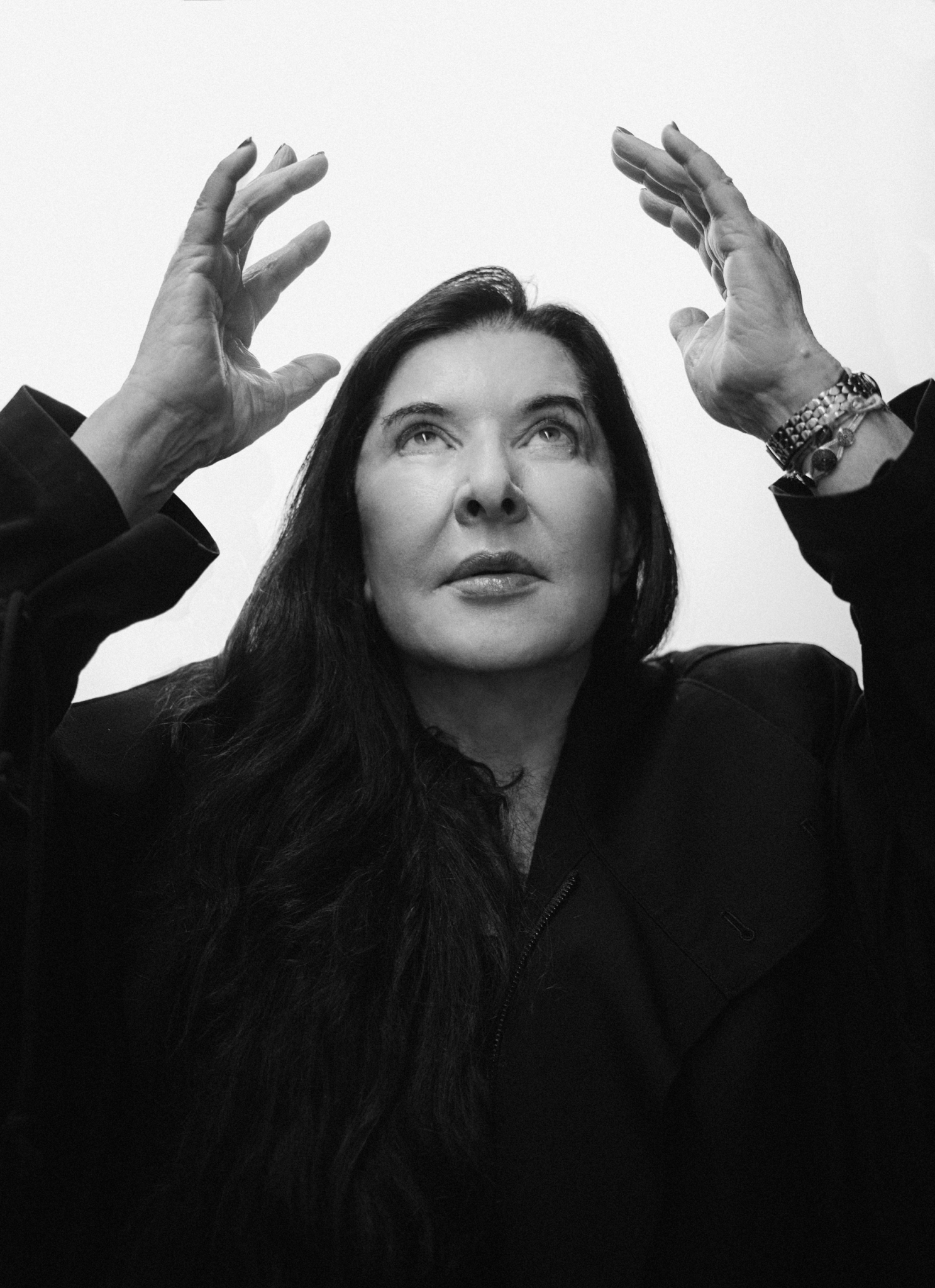
4 hours long with 70 performers across 13 stages, Balkan Erotic Epic is Marina Abramović’s most ambitious—and personal—work to date. Combining long-durational work with performance and dance, she believes she has succeeded in “creating a new art form.” A Rabbit’s Foot meet the artist in London and Manchester for an exclusive discussion at this pivotal moment in her career.
The artist is at the rave. It’s a Wednesday night in London, and Saatchi Yates, a gallery in Mayfair, is bursting at the seams. As an expectant queue lines the street outside, inside drag queens and scene kids rub shoulders with art dealers amongst a haze of strobe lighting and smoke machines. At the back, a sea of mobile phones points towards a woman screaming in front of the DJ booth. The woman is not Marina Abramović , legendary Serbian performance artist, although the evening has been held in her honour, for an exhibition that transforms two 1998 video works ‘Red Period’ and ‘Blue Period’ into a series of 1,200 photographic stills. (At £1800 a print, the gallery, founded by Phoebe Saatchi and her husband Arthur Yates, has a younger art buyer in mind). As Abramović leaves, cries of “We love you Marina!” follow her. “I was in bed by 10.30pm,” says Abramović , 78, when I speak to her the following week. “You have to follow strict rules as you get older.”
At the morning’s press conference, the artist had been in a more social mood. Greeting the room, Abramović —whose way of speaking combines Eastern European phrasing with a New Yorker’s urgency—has an infectious serenity, joking how on a return trip to Serbia after 45 years away, she staged a press conference at 6.30am. (Expecting no one to turn up, 180 people did.) She reminisces about the original film works. “They were made when I was really unhappy in my life,” says Abramović. She was still getting over the depression of her break-up with Ulay (the couple famously parted ways with a performance piece, a 200km walk which saw them meet in the middle of the Great Wall of China). “For 12 years we did everything together. So when we spilt I didn’t just lose a man I lost work. That was a dangerous place to be, a deep, deep hole of depression.” She found herself in Dallas. “In the middle of nowhere, in a motel. I made this piece about two different moods,” she explains. Whilst blue denoted melancholy. Red held more hope. “I felt split. I felt fat, ugly and disappointed in life. I wanted to do something seductive.”
The backroom of the Saatchi is a mini retrospective of Abramović’s other works—on the walls are framed photographs documenting past performances, which the artist enthusiastically reels off anecdotes for. Relation in Movement 1977, in which her and Ulay drove round in circles for 16 hours: “The car was our life and we had nowhere to live… each circle was one year of our life, so when we stopped we had entered the 21st century.” And Imponderabilia (1977), in which she and Ulay stood naked opposite each other in a doorway and asked people to pass, making them choose which naked body (man or woman) to squeeze past: “After three hours of the performance the police came.”
But more pressing on Abramović’s mind is her newest performance, Balkan Erotic Epic. Due to preview a week later, it is inspired by ancient pagan rituals from Slovakia, Albania, Bulgaria, Romania, Macedonia, Serbia and Montenegro, and is a four-hour performance with 70 performers across 13 stages in a 28,000 square metre space in The Factory in Manchester. From gypsy girls who bathe themselves in milk to peasant women who bear their vaginas to the sky to scare the gods and stop the rain, it is a gargantuanly exquisite spectacle that displays the full genius of Abramović’s vision.
At points in the performance Abramović sits quietly on one of the stages which staged to look like a cafe with red check tablecloths and a portrait of Yugoslavian leader Tito garlanded with fairylights (there are traditional dancers on the roof). Whilst there is physically less of Abramović in the spotlight here, the work is still arguably her most personal to-date, inspired by her difficult relationship to her mother. “This piece was to liberate myself from [her],” explains Abramović, as I speak to her in her dressing room, a couple of hours before the first night of the show. On the way there we share a cab with Svetlana Spajić, a performer in the show, who first discussed the piece with her 20 years ago. With Fatima Khan, Creative Director of A Rabbit’s Foot by my side, backstage is a happy maelstrom of activity and Abramović, who admits she had been crying the whole of the previous day, explains she feels calmer now. When the show opens at 7pm, a performer representing Danica Abramović—stern and communist in her prescription suit and “not too high heels”—leads the audience to the first area with a brass band, where Tito’s funeral is underway.“She plays her so incredibly well that I am almost afraid of what I’ve created because she is not playing my mother, she is my mother,” says the artist.
Beyond the choreography, performance, set design and music, are many beautiful films which play at the back of the stages—recordings of choreography which are then performed against, adding to a sense of liquid, looping temporality. Directed by her longtime collaborator Nabil Elderkin (who also captured Abramović here exclusively for A Rabbit’s Foot). During the shooting in London and Manchester, we caught up with Nabil and producer Mattia Bogianchino, who are also making an intimate documentary about Abramoviç’s journey to create Balkan Erotic Epic.
Below, A Rabbit’s Foot spoke to Abramović about rituals, her relationship to cinema and why good art is all about good timing.
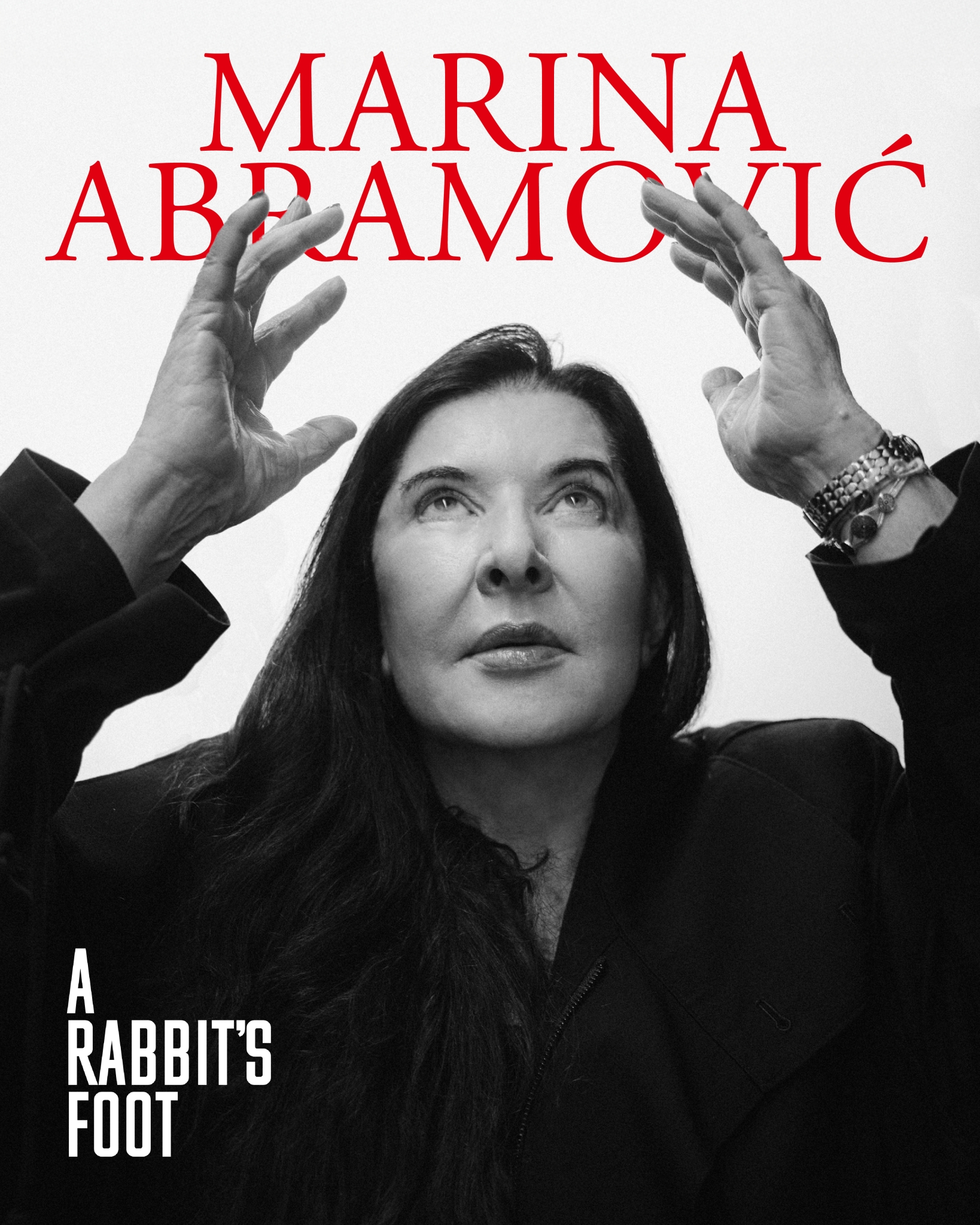
Kitty Grady: This show is about Balkan myths and rituals—why are you turning to these ideas now?
Marina Abramović: We are in the most shitty moment of human history right now. It’s wars everywhere, there’s hunger, there are impossible politicians running these countries. So people, I think that what we need right now is to go backwards to ancestors, to our roots, to rituals, to see if we can learn anything from them. Sexual energy is the only one we have in our body. It depends how we use it. If we use it for the beautiful things like love and tenderness and transcendence is one thing, but you can also use it in killing, violence and really hostile stuff. And that’s what we have to learn. But we’re so afraid of ourselves. We’re so afraid to understand who we really are. Because we are all the same human beings. We are living and we are going to die. So by exposing all these ancient rituals—I didn’t invent any of them—they’re all real. I only read about them and put them into contemporary time together with the choreographer, Blenard Azizaj and Billy Zhao [Durational Performance Director], the three of us created this whole show and the results are pretty incredible.
KG: And your mother is a key influence on this, and also has an important role in the show?
MA: My mother was a hardcore communist. I was terrified of my mother. My mother was not an inspiration. My mother, this piece was to liberate myself from my mother. It’s really to look backwards and see how I can give my mother something that she never experienced in her lifetime. And this is a really joyful thing. And also to lose herself in love, in passion, in lust that she could never do. So I created this figure, the mother figure, played by Maria Stamenković Herranz. She plays her so incredibly well that I am almost afraid of what I’ve created because she is not playing my mother, she is my mother. She is wearing the communist bag in shitty cheap fabric and not too high heels. Yesterday evening she came and she looked at me and said “are you terrified?”
KG: This is the biggest performance of your career—and I’ve been reading your autobiography where you talk about the shadow of the peanut painting at the beginning of your career, and it made me think about scale in your work and how important it is.
MA: First of all, we enter a space with 28,000 square meters. It’s enormous. And they’re literally mostly these places used for concerts that can easily put 5,000 people in. But when you give these spaces to visual artists, you have to think about scale, how to occupy it, and the kind of installation you want to make. And I need to make something which is so impersonal, like white cube, into something intimate. So I cover the entire space with black grass, except some patches of green, and then I added this cement and wood with Anna Schöttl who worked with me before on the installation room where Maria Callas died in Paris. The video [directed by Nabil Elderkin] is also incredibly important. It’s a huge part of the set. Because first we create the piece and then we edit the piece and then we film the piece, and then we put everything together. It’s all these components in one. The people you see performing are the same people in the video. Everyone was doing something for the first time. I only work with young people half of my age. So they really put all the energy and enthusiasm into this.
This is a unique piece because for the first time we have mixed long-durational work and performance and dance, which has never been done. Because dance is always in time, rhythm, and is very much through music. And now we can create this kind of limitless time—the feeling of time. You never see the ending, you never see stopping. And, as rituals, they always repeat themselves. But it’s always different.
KG: In your daily life, are rituals important?
MA: No, my dear. I’m the most contradictory person you’ve ever met in your life. When I have to do a really hardcore performance, then I put myself into regime. If I don’t, I really like to lie around and look shitty, watch TV series, something to clean my mind. But honestly, my life is so demanding. I’m living literally moment by moment. Today, on the same day as this, my show was opening at the Royal Academy in Vienna. There was a press conference this morning. And it’s a very big show, you know. I cannot be in two places at the same time. So I cannot juggle between all of this. But still this is my priority.
KG: What was the reaction like to the dress rehearsal?
MA: One thing that was incredible yesterday [at the dress rehearsal] when I invite all my friends was the disbelief on people’s faces. Because everybody around said that they never saw anything like that. A few people said that I had succeeded in making a new art form. You need to see for yourself and then judge.
KG: And have you thought about the afterlife of the project?
MA: Let me finish this one. Let me get to 80 years old. Then I’m launching my avatar at the end of this year. So this is the afterlife I’m starting to think about. This is a big deal to finish with my Slavic background and my mother. So it’s very emotional, but at the same time I’m experiencing incredible moments in my life right now.
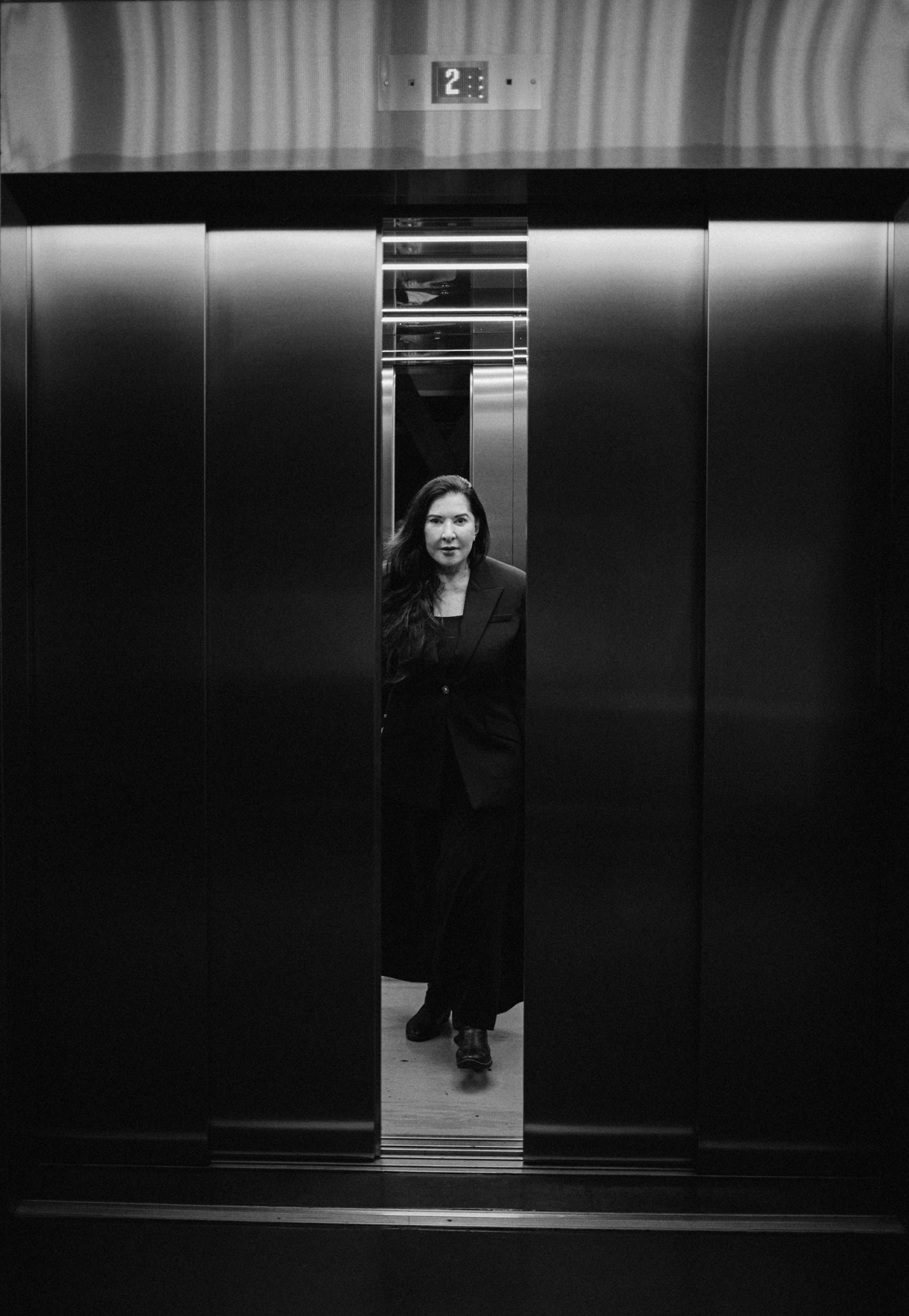
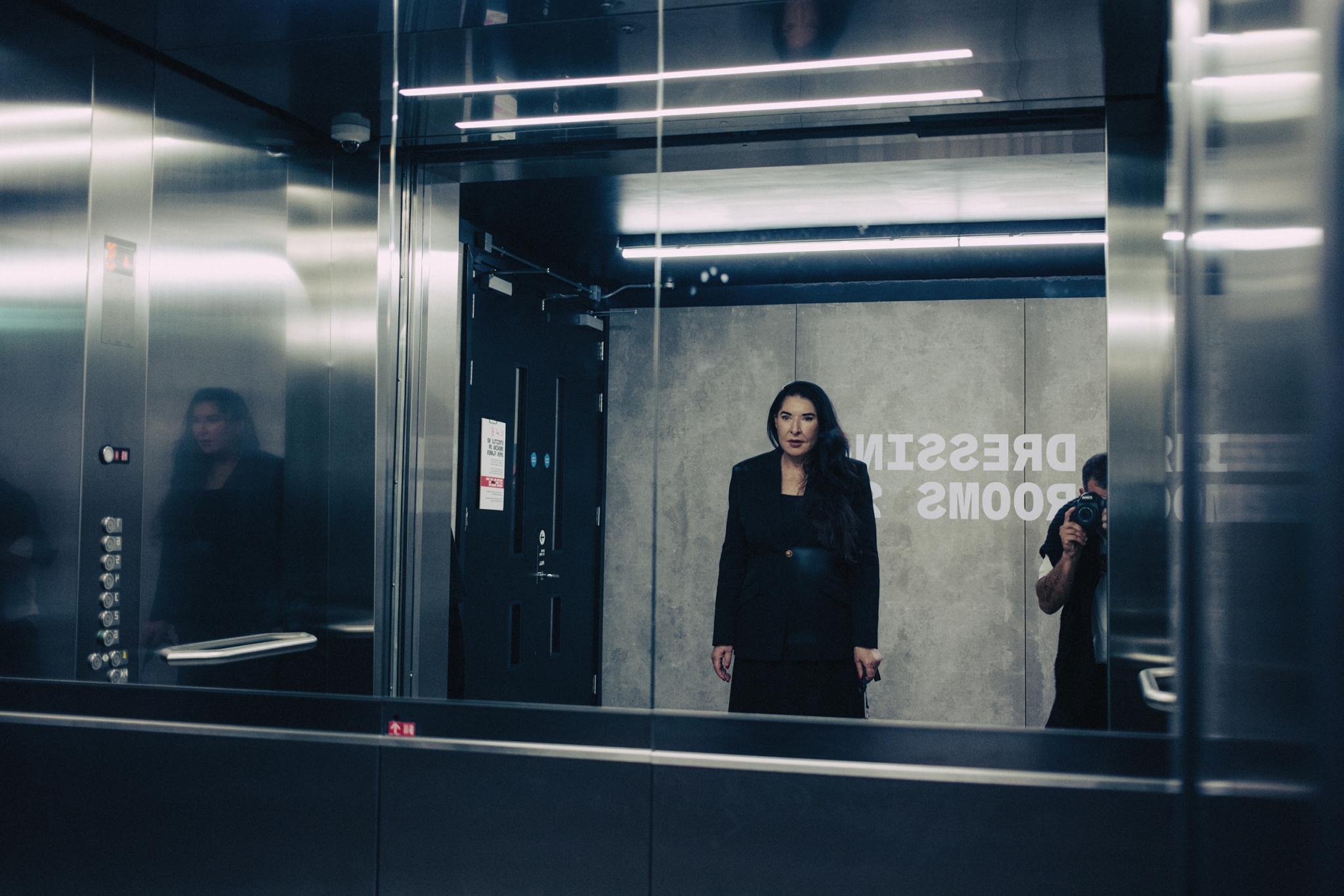
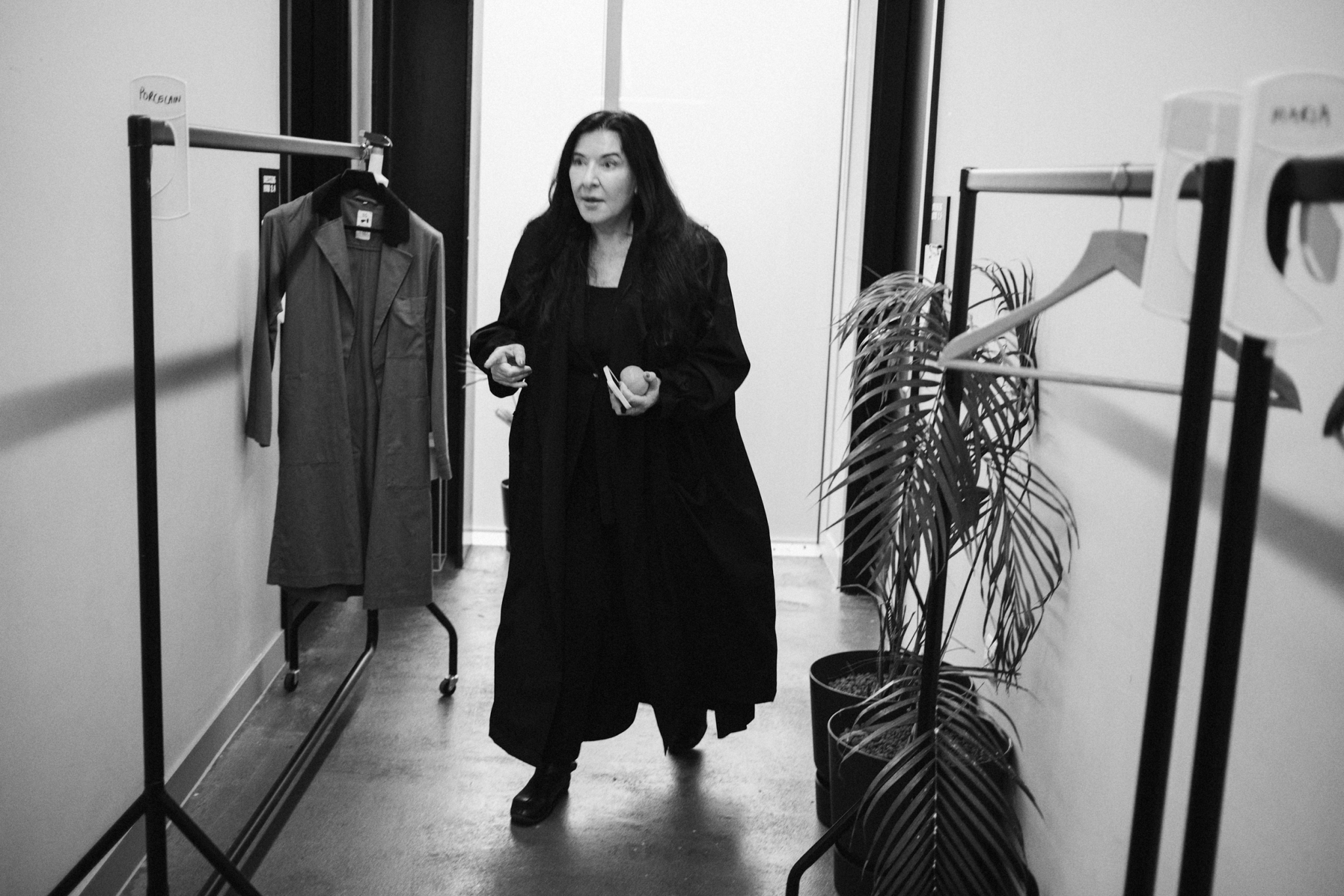
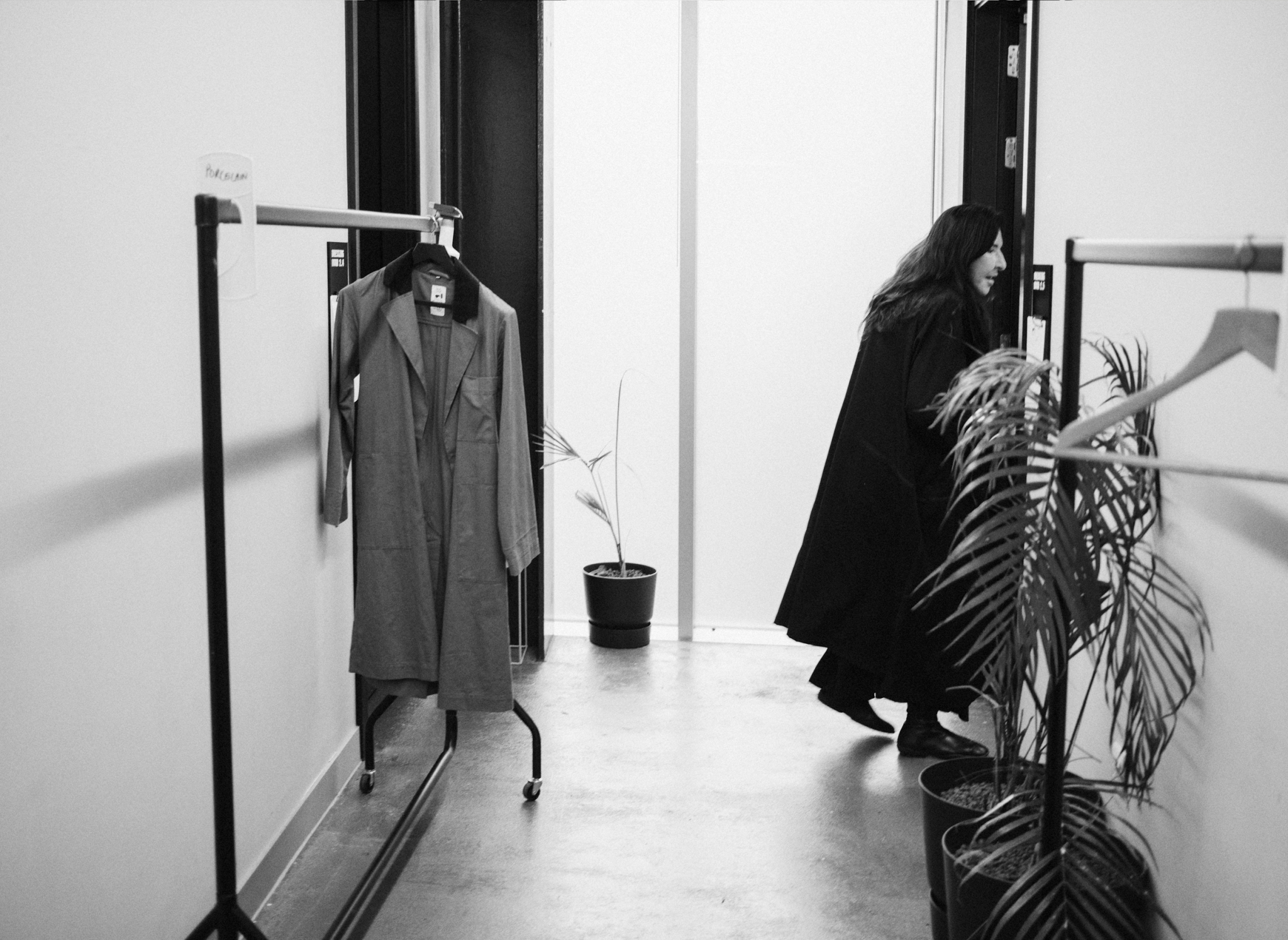
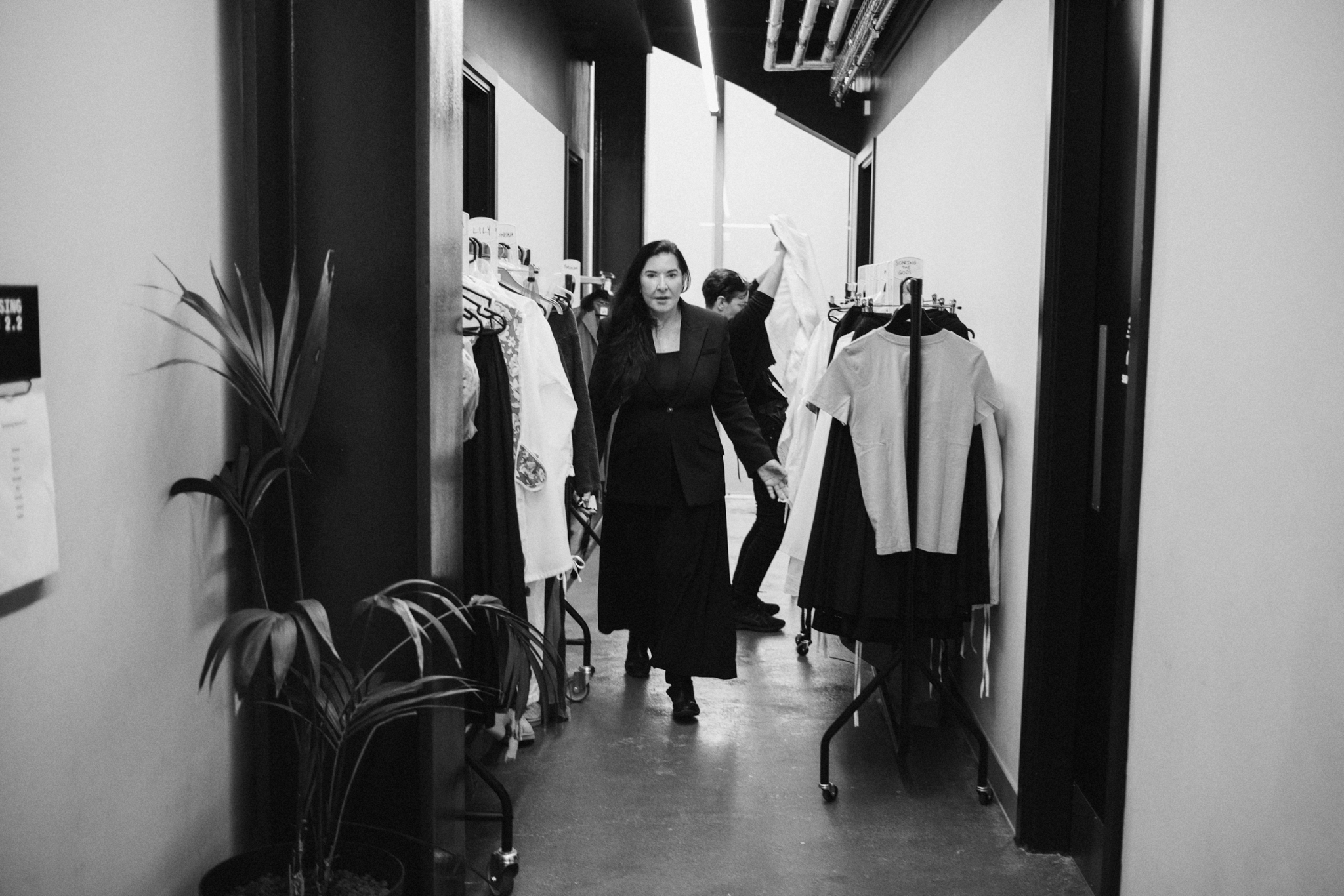
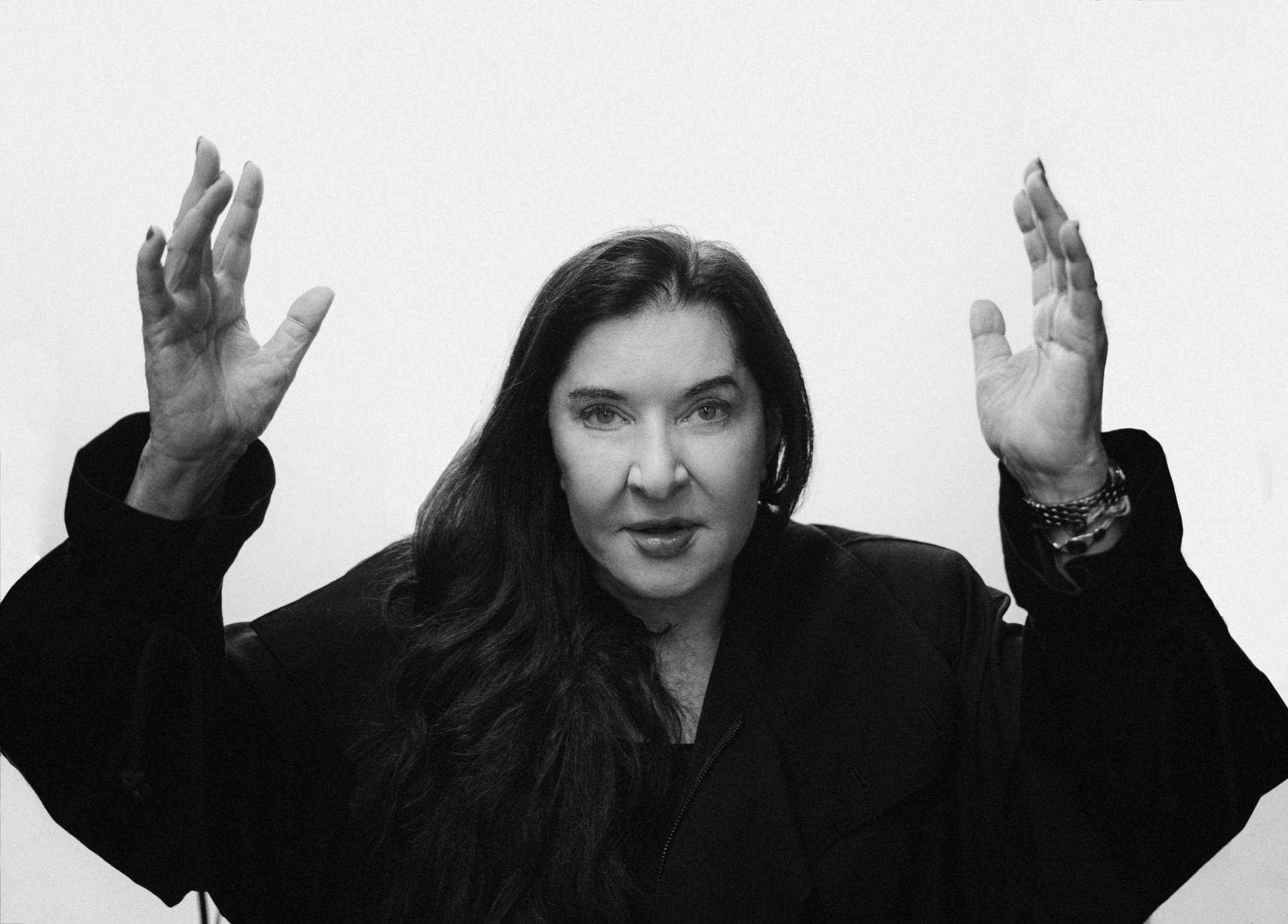
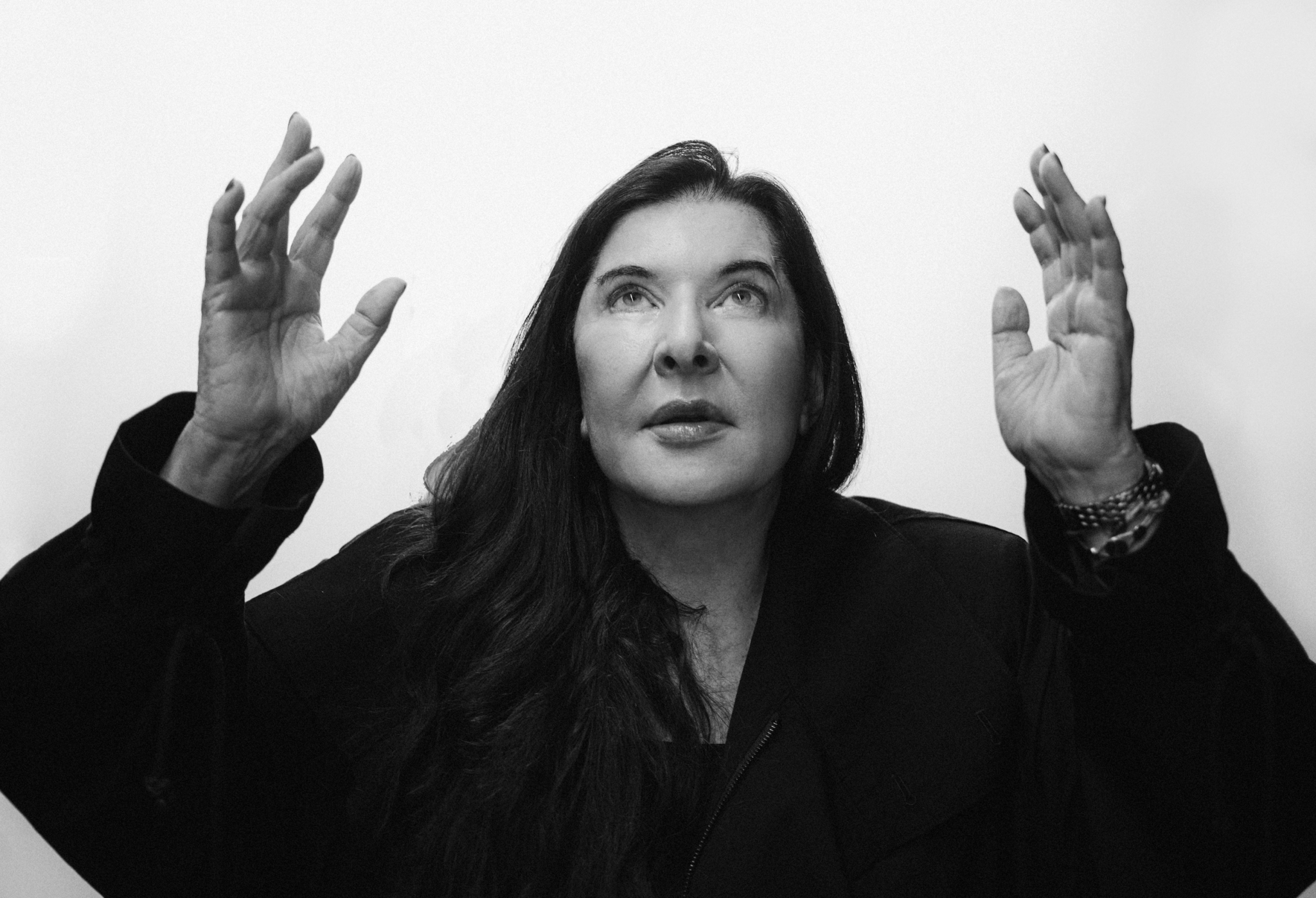
You know the big problem in life as an artist is that artists have to really have some tragedies, have to have all this shitty life. You know my theory is the more shitty tragedies you have, the better artists you get, because you have material to work with. Nobody makes anything with happiness. Happiness is just a state that you don’t want to change. So I am really in a difficult moment right now—I’m happy.
Marina Abramović
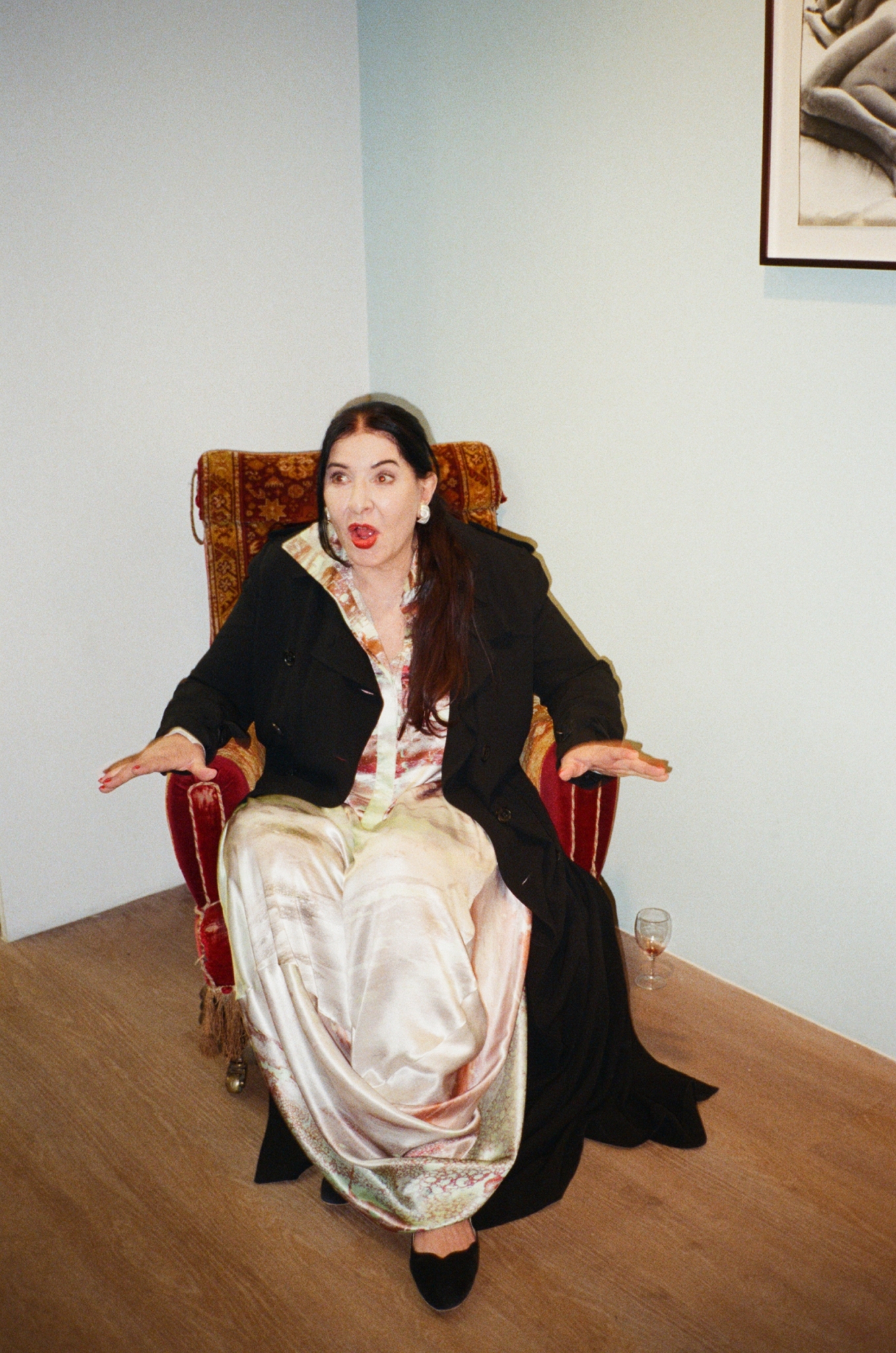
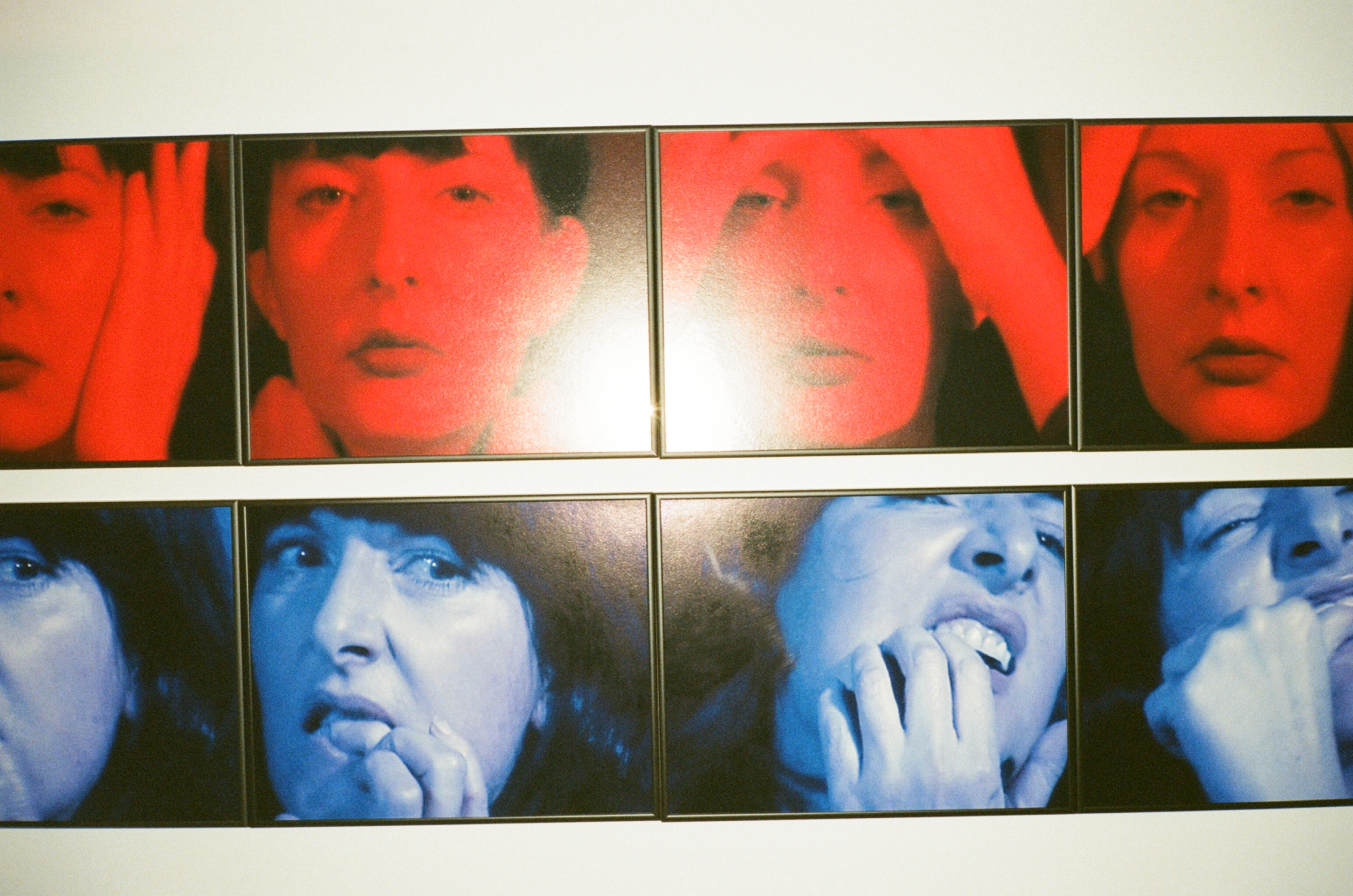
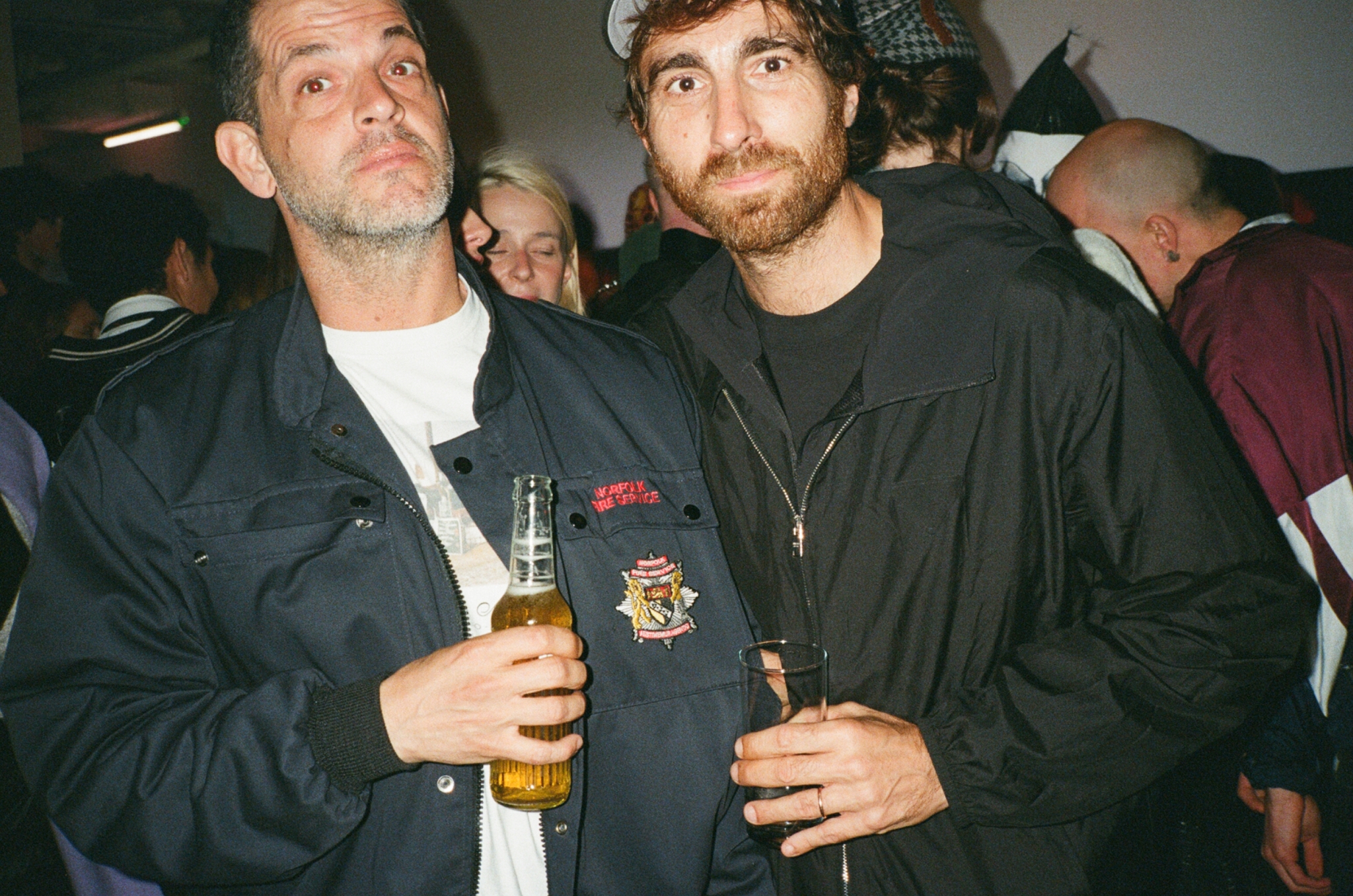
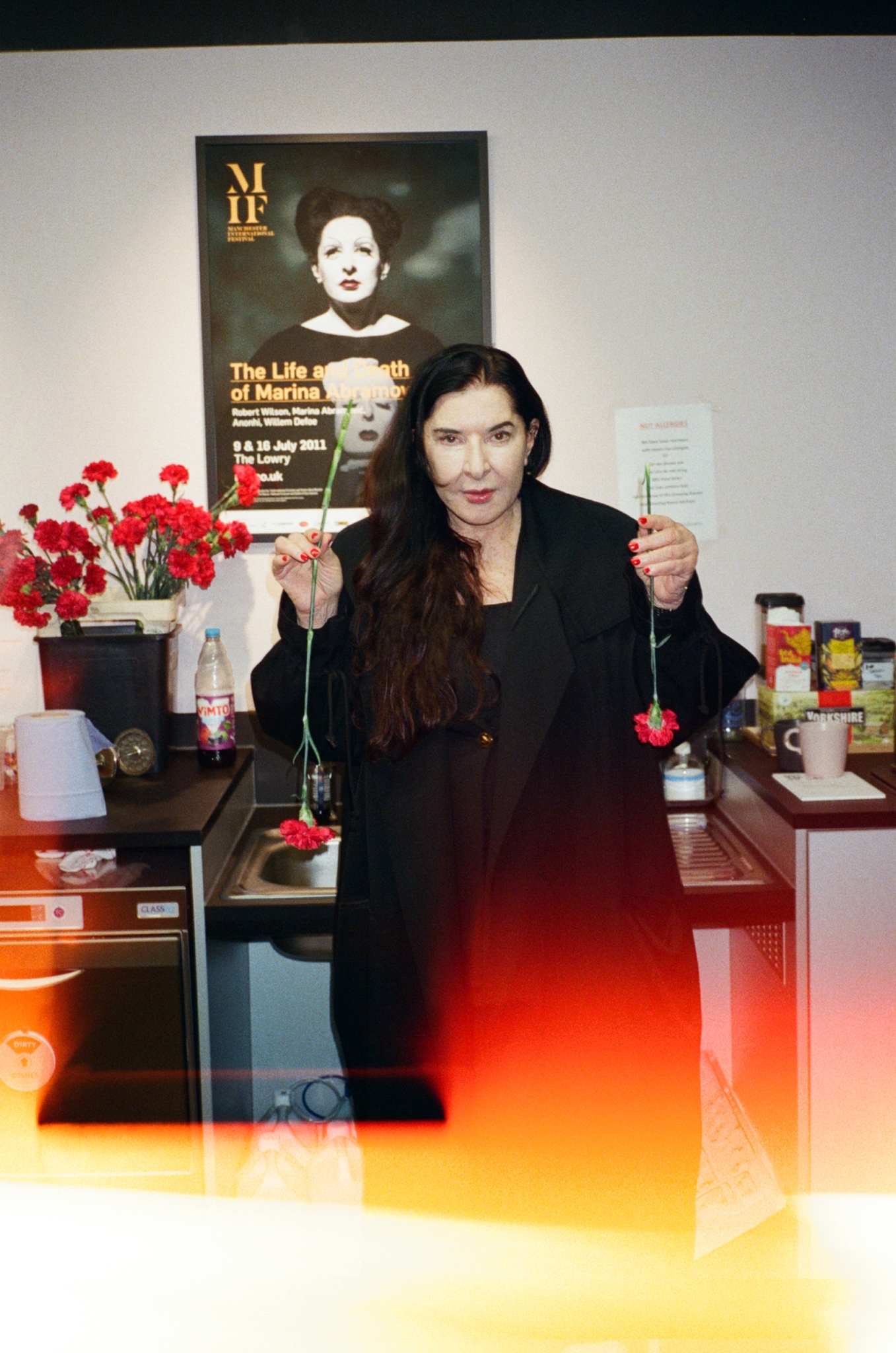
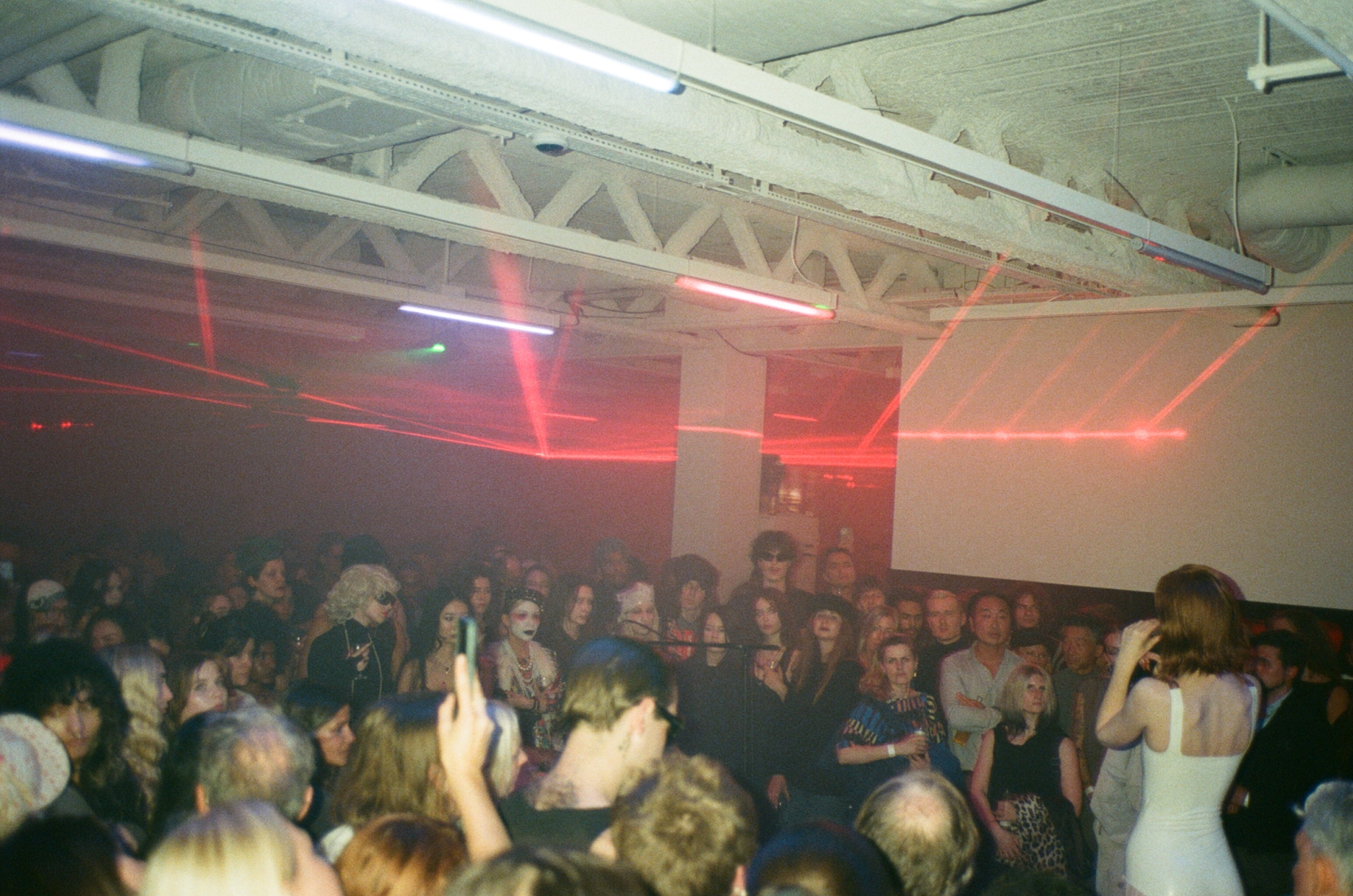
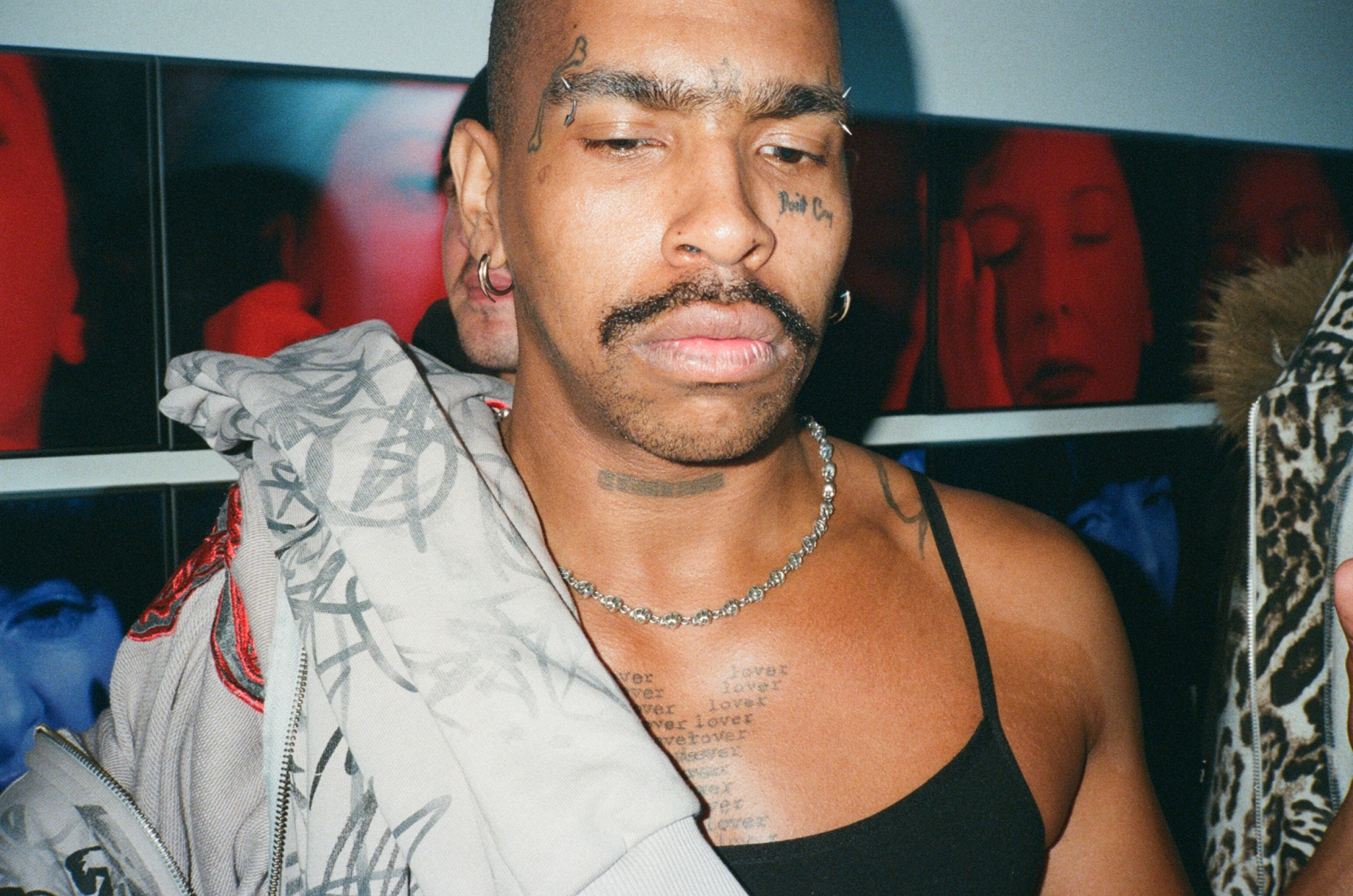
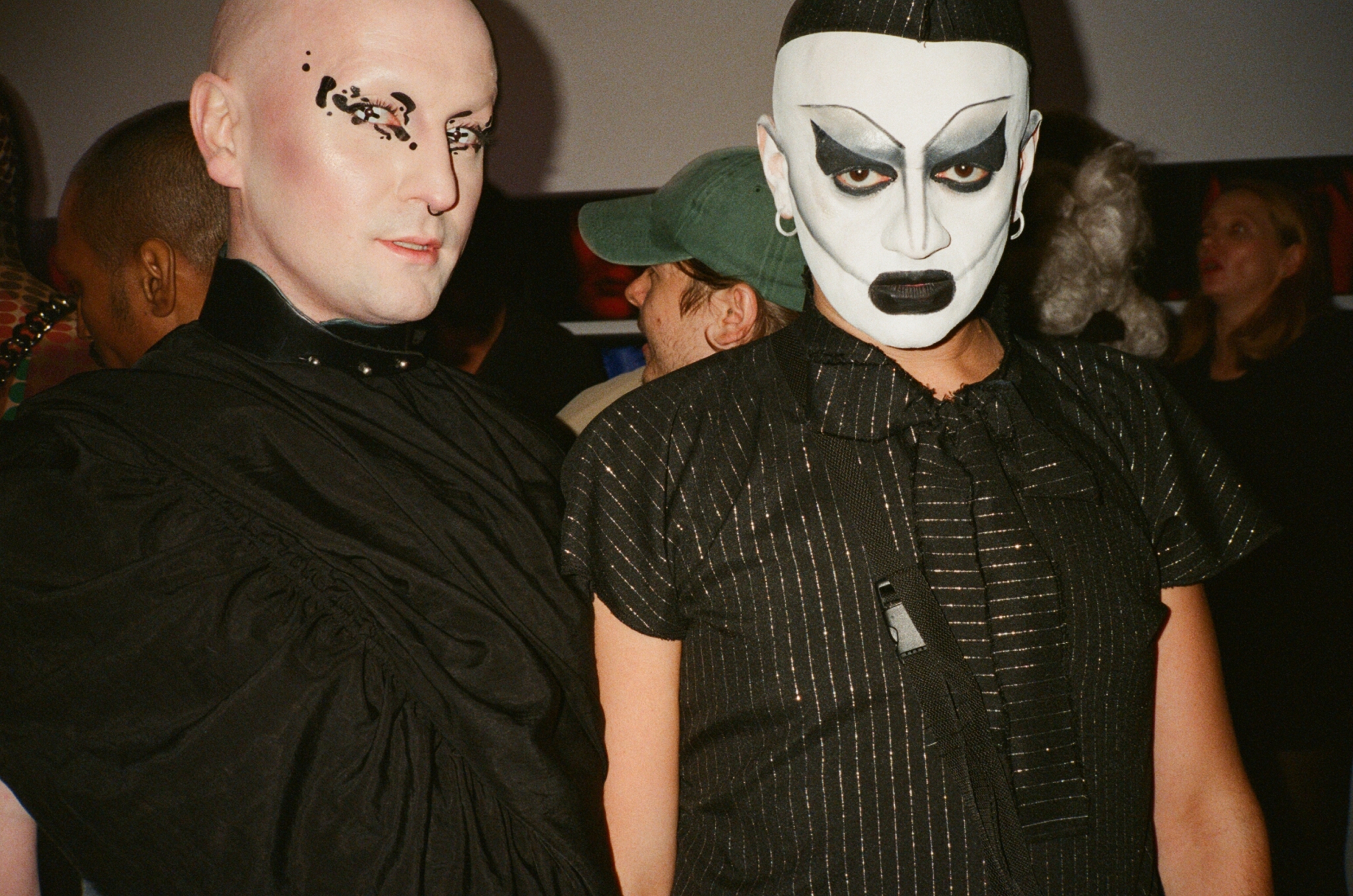
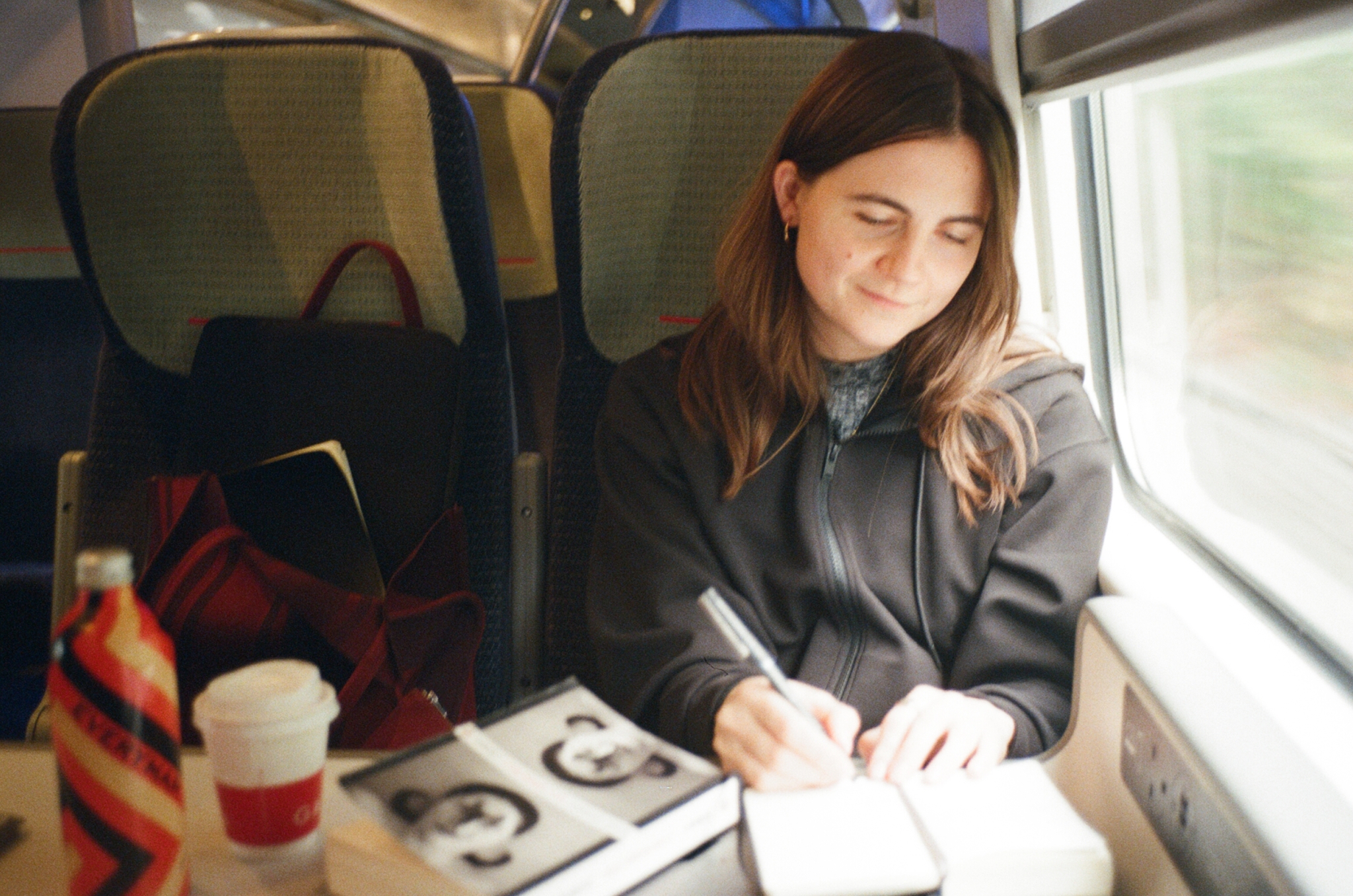
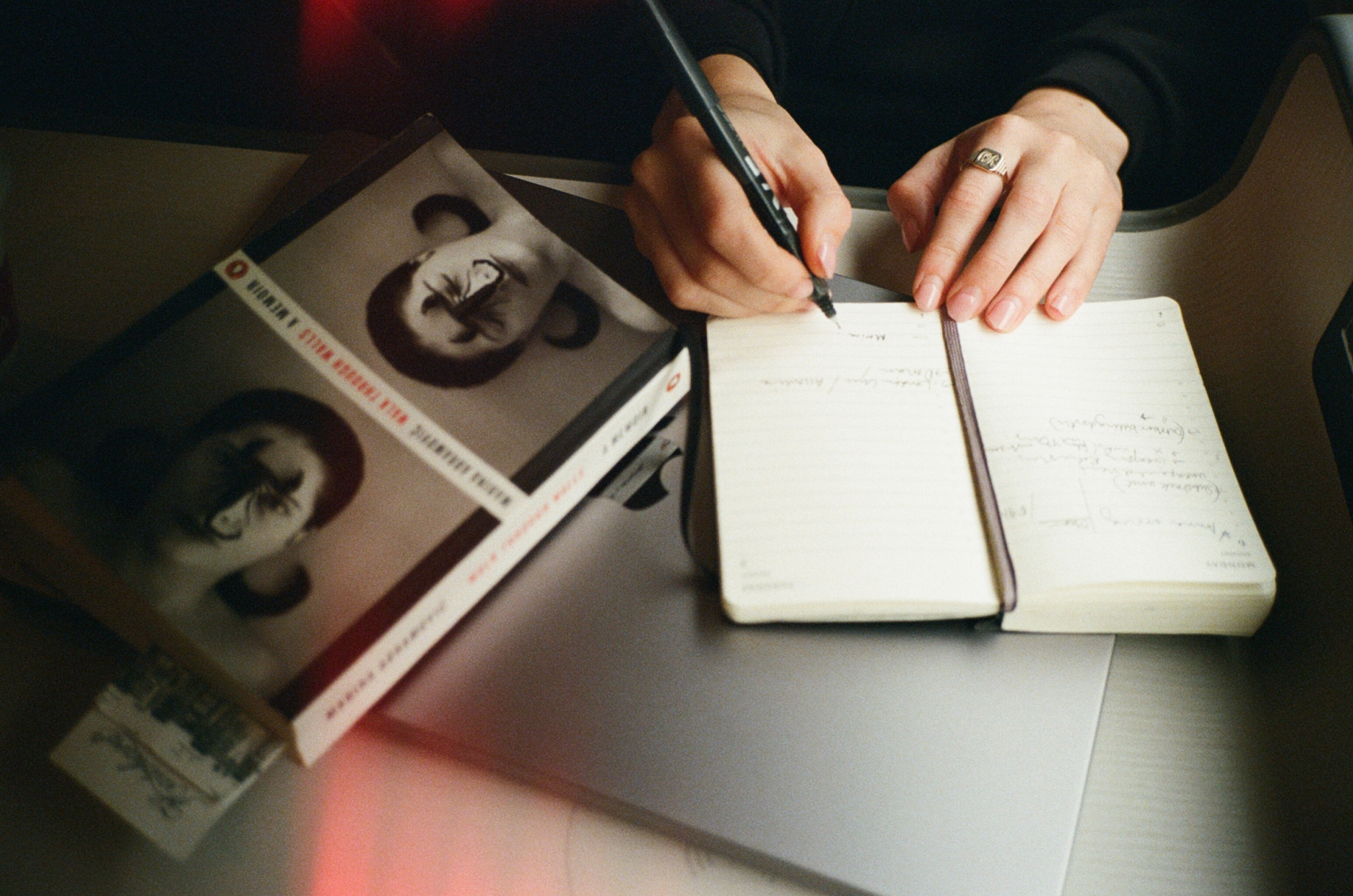
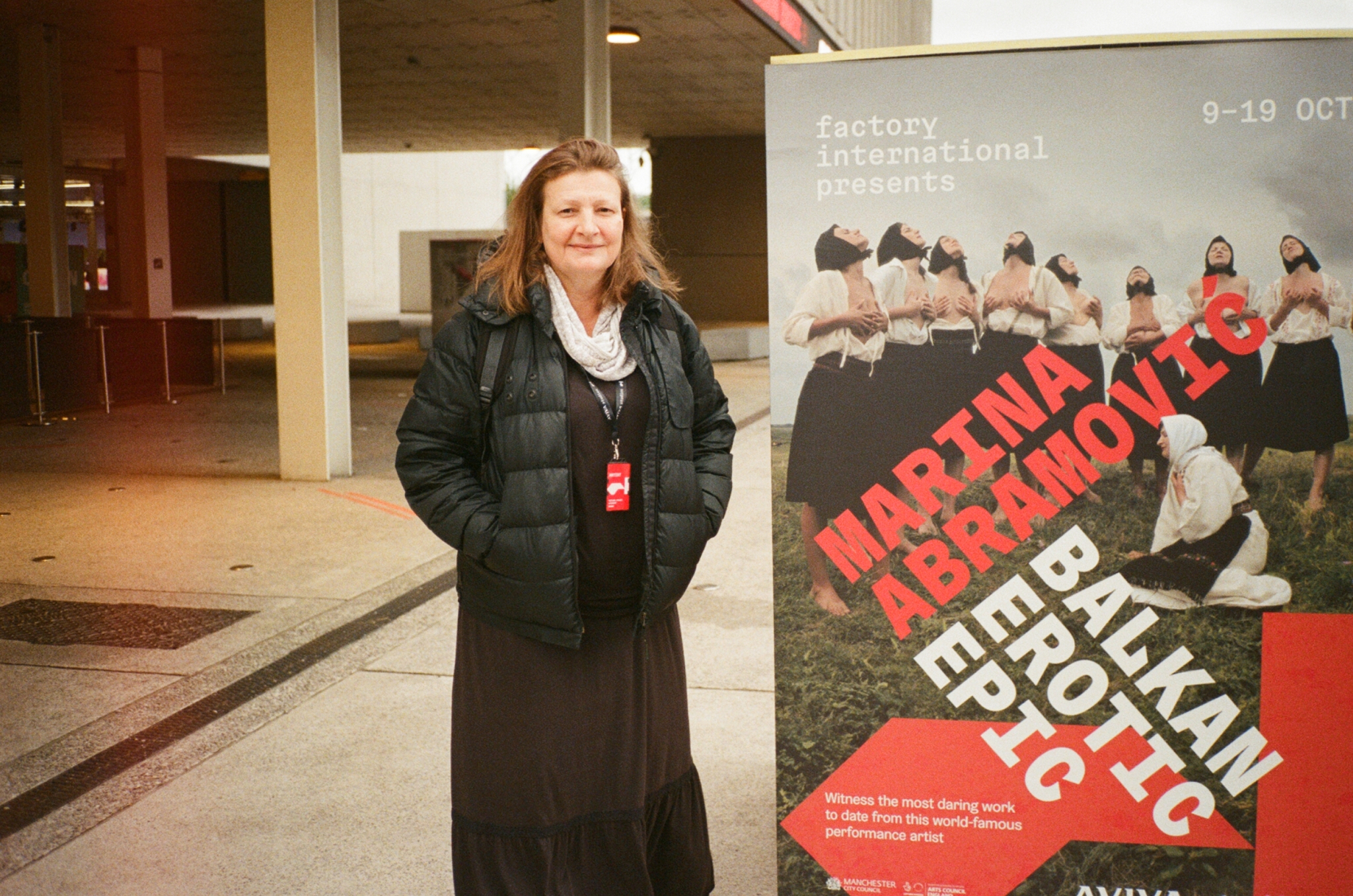
KG: What do you think has been the secret for such a long and fruitful career? You have such stamina.
MA: I never stop. I work like hell. I am incredibly enthusiastic about everything and I wake up with a million ideas of what to do. I’m kind of too much, even for myself. Day to day life, it’s very important to be stable. I wake up, I need a cup of tea, I read the news of what is going on in the world. Then I do some small exercises if I can. If there’s a swimming pool, I try to swim. If not then I try to do something physical. Then I eat the breakfast—porridge. This morning it was rice with two boiled eggs and kimchee, which is kind of asian but I like it. And tea. Then for lunch, I like home cooking. Lentils three days a week. And then the evening we come home with some piece of mozzarella or tomato and I go to sleep. I need to have eight hours of sleep. If I sleep, I can do anything. I don’t drink. I don’t smoke. I don’t take drugs. I never go out. I’m not like you, partying all night.
KG: Well, we were at the “rave” at Saatchi Yates, which you attended.
MA: I went home immediately. I was in bed by 10.30. This was the idea of the Saatchi Yates. They are young. I say “really”? I have nothing against it. But you have to follow these strict rules when you are getting older. I’m still walking okay but the steps are difficult, standing up. So I have to deal with old age but also with my capability to work all the time.
KG: The show at Saatchi Yates explored your ‘red period’, and ‘blue period’. What colour period are you in now?
MA: Wow. I am definitely in my pink period. You know the big problem in life as an artist is that artists have to really have some tragedies, have to have all this shitty life. You know my theory is the more shitty tragedies you have, the better artists you get, because you have material to work with. Nobody makes anything with happiness. Happiness is just a state that you don’t want to change. So I am really in a difficult moment right now—I’m happy. Humour is everything. I need to put lots of humour in my life right now, especially in the moment of human history where we live.
KG: As we’re a film magazine, we’d love to know more about your relationship to cinema. What films do you think everyone should watch?
MA: For me cinema is really important. I think there was such a sad story with David Lynch and when he died he was mentioned pretty much just like other people. But I think David Lynch is pretty much a genius, because he went a completely different way in cinema. He’s an inventor, because cinema always goes linear, you have the story, you develop the story and you end it. But his vision is actually a spiral. So that’s the way you always see things from different angles. I really think that people should look back at what he’s done and think again. Because I think that he’s historically very important. Now they sold his house in Los Angeles, I was so sad to see this. There should really be a creative museum there.
KG: Was cinema important for you growing up?
MA: I was really educated on Russian cinema, Polish cinema, you know, the old Eastern European cinema, Polanski Knife in the Water [directed by Roman Polanski], a black and white movie, so important. So I look into this old stuff, you know Tarkovsky. And then, I really loved Italian cinema, you know anything from Visconti to Antonioni. I mean for me Antonioni with Monica Vitti, she just had to open the window, smoke a cigarette, look far away, movie done. I really think my dream is to make a movie, because I made an opera, I made this. That would be the next.
KG: Do you have any plans to do that?
MA: Incredibly interesting, because of Teorema. This is something very interesting about sex without guilt with the young Terrence Stamp. And when the maid starts levitating, she becomes the elevation of the spirit. She’s incredibly interesting. I’d like to think about the theme and work with that. When I have an idea it takes 10, 15 years for them to grow in my head, until I know now is the time.
KG: There’s also one thing being creative and having good ideas, and other actually doing them.
MA: It’s timing. When? And to whom and where the public will show. You have to have all these elements together in one. Then, right time, right piece, right public. There’s so many incredible works in the past that were lost and then they’ll be rediscovered much later. Actually when the consciousness of the public is developed enough to absorb it.
KG: So it’s almost like you were born at the right time for your work to be received.
MA: Yeah, I come from communism. It’s a very different aesthetic. It’s an aesthetic I create with the women [in the show] and a gypsy is pouring milk all over her body. Pouring the milk happens when the woman is pregnant, and if she doesn’t have enough milk for the child, they will pour milk over her. Now it is long-durational over four hours. And then the aesthetic of the bathroom is really shitty, this little mirror with neon lights and electricity cables everywhere. And then we recreated another ritual where the man is young and he dies and he can’t be buried if he is not married. So he has to marry the corpse. He has to marry the most beautiful girl in the village. And you see her standing four hours up there, it’s just incredible. All the rituals have a meaning.
KG: I don’t know how I’m going to feel afterwards.
MA: You have to be there at 10.30pm when the rain comes. When the woman shows the vagina to stop the rain. I asked all the women not to shave for three months. It’s a very raw ritual, but the performers go into a trance. During rehearsals everything became the most incredible therapy. They are free. None of these women could have any bullshit because they had the power. Unbelievable. And you can see another side of the fragility of men and the shame of the men. I didn’t realise how therapeutic this work would be. Because they go into repetition. You go into the trance. And another energy comes out.
Balkan Erotic Epic is on show at The Factory in Manchester until 19th October.

